The top list of academic research databases
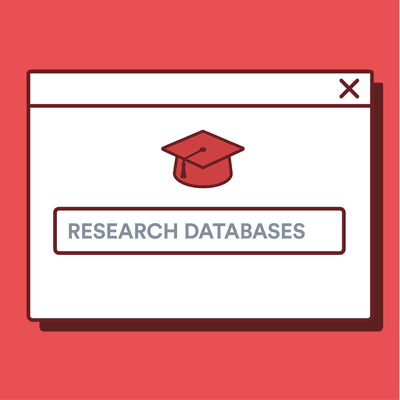

2. Web of Science
5. ieee xplore, 6. sciencedirect, 7. directory of open access journals (doaj), get the most out of your academic research database, frequently asked questions about academic research databases, related articles.
Whether you are writing a thesis , dissertation, or research paper it is a key task to survey prior literature and research findings. More likely than not, you will be looking for trusted resources, most likely peer-reviewed research articles.
Academic research databases make it easy to locate the literature you are looking for. We have compiled the top list of trusted academic resources to help you get started with your research:
Scopus is one of the two big commercial, bibliographic databases that cover scholarly literature from almost any discipline. Besides searching for research articles, Scopus also provides academic journal rankings, author profiles, and an h-index calculator .
- Coverage: 90.6 million core records
- References: N/A
- Discipline: Multidisciplinary
- Access options: Limited free preview, full access by institutional subscription only
- Provider: Elsevier

Web of Science also known as Web of Knowledge is the second big bibliographic database. Usually, academic institutions provide either access to Web of Science or Scopus on their campus network for free.
- Coverage: approx. 100 million items
- References: 1.4 billion
- Access options: institutional subscription only
- Provider: Clarivate (formerly Thomson Reuters)
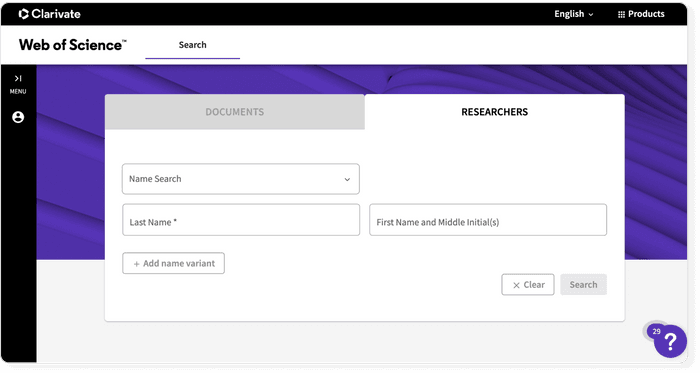
PubMed is the number one resource for anyone looking for literature in medicine or biological sciences. PubMed stores abstracts and bibliographic details of more than 30 million papers and provides full text links to the publisher sites or links to the free PDF on PubMed Central (PMC) .
- Coverage: approx. 35 million items
- Discipline: Medicine and Biological Sciences
- Access options: free
- Provider: NIH
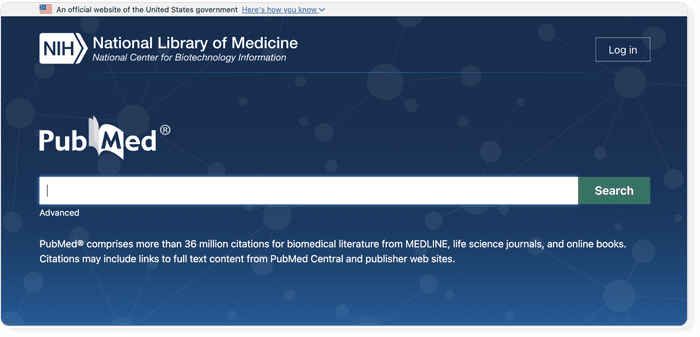
For education sciences, ERIC is the number one destination. ERIC stands for Education Resources Information Center, and is a database that specifically hosts education-related literature.
- Coverage: approx. 1.6 million items
- Discipline: Education
- Provider: U.S. Department of Education

IEEE Xplore is the leading academic database in the field of engineering and computer science. It's not only journal articles, but also conference papers, standards and books that can be search for.
- Coverage: approx. 6 million items
- Discipline: Engineering
- Provider: IEEE (Institute of Electrical and Electronics Engineers)
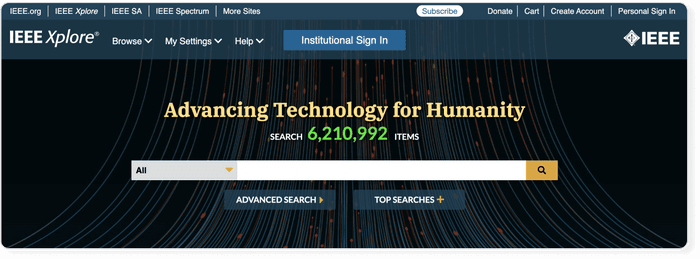
ScienceDirect is the gateway to the millions of academic articles published by Elsevier, 1.4 million of which are open access. Journals and books can be searched via a single interface.
- Coverage: approx. 19.5 million items
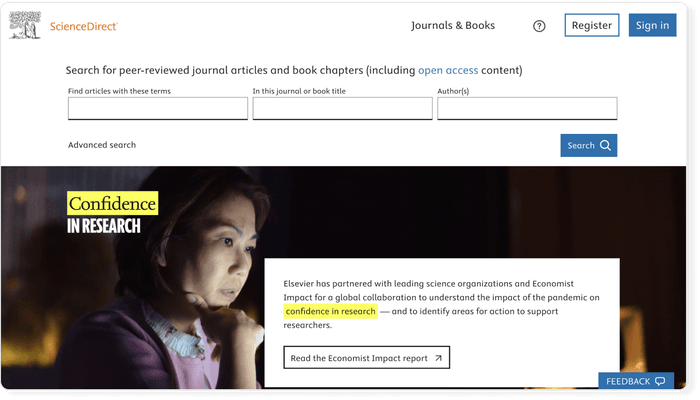
The DOAJ is an open-access academic database that can be accessed and searched for free.
- Coverage: over 8 million records
- Provider: DOAJ

JSTOR is another great resource to find research papers. Any article published before 1924 in the United States is available for free and JSTOR also offers scholarships for independent researchers.
- Coverage: more than 12 million items
- Provider: ITHAKA
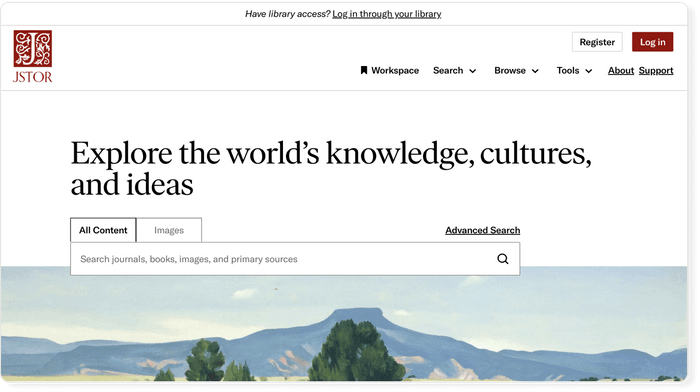
Start using a reference manager like Paperpile to save, organize, and cite your references. Paperpile integrates with PubMed and many popular databases, so you can save references and PDFs directly to your library using the Paperpile buttons:
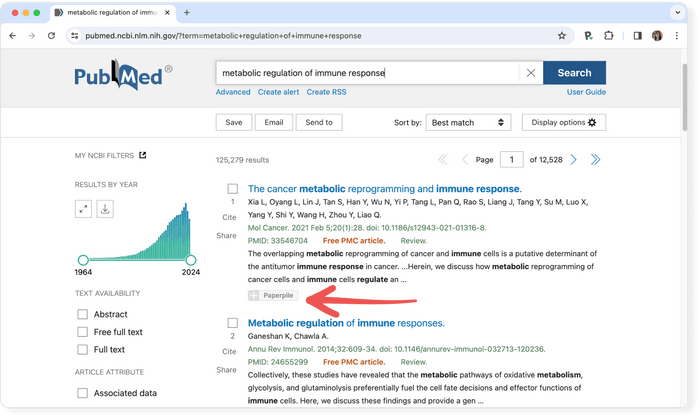
Scopus is one of the two big commercial, bibliographic databases that cover scholarly literature from almost any discipline. Beside searching for research articles, Scopus also provides academic journal rankings, author profiles, and an h-index calculator .
PubMed is the number one resource for anyone looking for literature in medicine or biological sciences. PubMed stores abstracts and bibliographic details of more than 30 million papers and provides full text links to the publisher sites or links to the free PDF on PubMed Central (PMC)

Thank you for visiting nature.com. You are using a browser version with limited support for CSS. To obtain the best experience, we recommend you use a more up to date browser (or turn off compatibility mode in Internet Explorer). In the meantime, to ensure continued support, we are displaying the site without styles and JavaScript.
- View all journals
Databases articles from across Nature Portfolio
A database is one or more sets of data, for example numbers, characters and images, bundled together with software that enables data to be added, removed or retrieved. Databases can be used to store research data, for example in protein databases and genetic databases, and they organise data into standard formats so that information can readily be obtained.
Related Subjects
- Genetic databases
- Protein databases
Latest Research and Reviews
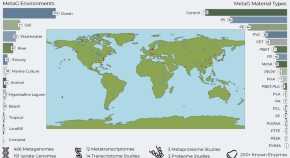
Potential routes of plastics biotransformation involving novel plastizymes revealed by global multi-omic analysis of plastic associated microbes
- Rodney S. Ridley Jr
- Roth E. Conrad
- Konstantinos T. Konstantinidis

brainlife.io: a decentralized and open-source cloud platform to support neuroscience research
brainlife.io is a one-stop cloud platform for data management, visualization and analysis in human neuroscience. It is web-based and provides access to a variety of tools in a reproducible and reliable manner.
- Soichi Hayashi
- Bradley A. Caron
- Franco Pestilli
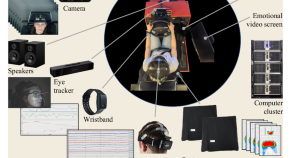
A multimodal driver monitoring benchmark dataset for driver modeling in assisted driving automation
- Khazar Dargahi Nobari
- Torsten Bertram
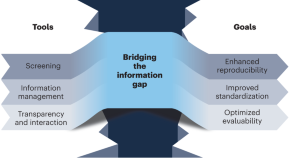
Bridging the information gap in organic chemical reactions
Lack of standardization, transparency and interaction creates information gaps in scientific publications. Through strategies such as voluntary information management, standardization of reaction set-ups, and smart screening approaches, this Perspective gives guidelines on how to improve data management in publications reporting chemical reactions, focusing on reproducibility, standardization and evaluation of synthetic transformations.
- Malte L. Schrader
- Felix R. Schäfer
- Frank Glorius

Long-term exposure to residential greenness and decreased risk of depression and anxiety
The authors examine the longitudinal relationship between residential greenness and the incidence of depression and anxiety using a sample of 409,556 participants from the UK Biobank.
- Jianing Wang
- Yudiyang Ma
- Yaohua Tian
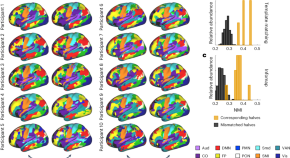
A precision functional atlas of personalized network topography and probabilities
The Masonic Institute for the Developing Brain (MIDB) Precision Brain Atlas is a resource of personalized brain network topographies ( n = 9,900). It also provides a probabilistic atlas and integration zones across diverse magnetic resonance imaging (MRI) datasets and ages. The atlas increases the reliability of brain-wide association studies (BWAS) and improves targeting for neuromodulation.
- Robert J. M. Hermosillo
- Lucille A. Moore
- Damien A. Fair
News and Comment
Cosmic recipe book updated.
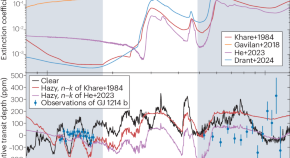
In an exoplanet atmosphere far, far away
JWST collects vast amounts of information about exoplanets light years away from Earth. Back home, the measured optical constants of laboratory aerosols are critically input parameters in models to interpret the observational results.
- Ella Sciamma-O’Brien
- Thomas Drant
- Nicholas Wogan

‘All of Us’ genetics chart stirs unease over controversial depiction of race
Debate over figure connecting genes, race and ethnicity reignites concerns among geneticists about how to represent human diversity.

The All of Us Research Program is an opportunity to enhance the diversity of US biomedical research
The All of Us Research Program has prioritized the enrollment of people from backgrounds that are historically under-represented in medical research to bring precision medicine to the full diversity of the US population and to improve health outcomes for all.
- Diana W. Bianchi
- Patricia Flatley Brennan
- Joshua C. Denny
Missing centenarians are an international concern
- Ivan Lozada-Martinez
- Juan-Manuel Anaya

Effects of regulatory variants across pig tissues
The Farm Animal GTEx project introduces a new resource for pigs, in which they map genetic variation to differences in gene expression across thousands of samples.
Quick links
- Explore articles by subject
- Guide to authors
- Editorial policies
An official website of the United States government
The .gov means it’s official. Federal government websites often end in .gov or .mil. Before sharing sensitive information, make sure you’re on a federal government site.
The site is secure. The https:// ensures that you are connecting to the official website and that any information you provide is encrypted and transmitted securely.
- Publications
- Account settings
PubMed Overview
PubMed is a free resource supporting the search and retrieval of biomedical and life sciences literature with the aim of improving health–both globally and personally.
The PubMed database contains more than 36 million citations and abstracts of biomedical literature. It does not include full text journal articles; however, links to the full text are often present when available from other sources, such as the publisher's website or PubMed Central (PMC) .
Available to the public online since 1996, PubMed was developed and is maintained by the National Center for Biotechnology Information (NCBI) , at the U.S. National Library of Medicine (NLM) , located at the National Institutes of Health (NIH) .
About the Content
Citations in PubMed primarily stem from the biomedicine and health fields, and related disciplines such as life sciences, behavioral sciences, chemical sciences, and bioengineering.
PubMed facilitates searching across several NLM literature resources:
MEDLINE is the largest component of PubMed and consists primarily of citations from journals selected for MEDLINE; articles indexed with MeSH (Medical Subject Headings) and curated with funding, genetic, chemical and other metadata.
PubMed Central (PMC)
Citations for PubMed Central (PMC) articles make up the second largest component of PubMed.
PMC is a full text archive that includes articles from journals reviewed and selected by NLM for archiving (current and historical), as well as individual articles collected for archiving in compliance with funder policies.
The final component of PubMed is citations for books and some individual chapters available on Bookshelf .
Bookshelf is a full text archive of books, reports, databases, and other documents related to biomedical, health, and life sciences.
Additional Resources
- For how-to information on searching the PubMed database, see the PubMed User Guide.
- For additional PubMed documentation, visit NLM's MEDLINE and PubMed resources guide .
Last update: August 15, 2023
NCBI Literature Resources
MeSH PMC Bookshelf Disclaimer
The PubMed wordmark and PubMed logo are registered trademarks of the U.S. Department of Health and Human Services (HHS). Unauthorized use of these marks is strictly prohibited.
News alert: UC Berkeley has announced its next university librarian
Secondary menu
- Log in to your Library account
- Hours and Maps
- Connect from Off Campus
- UC Berkeley Home
Search form
How to find articles and databases: finding articles.
- Finding Articles
- Finding Databases
- Resource Types
- Guide to Database Icons
Help finding articles
You can use UC Library Search on the Library homepage to search across various book and article databases simultaneously. To find the best resources for your topic, you might want to go directly to a specific database.
Find the best database(s) for your research topic:
General article databases are a good place to start since they include both popular and scholarly journal titles covering numerous disciplines. Simply choose one of those databases and type in your keywords to begin to find articles.
Browse for databases by subject (such as Economics , Electrical Engineering , or Art History ) if you want to dig deeper into resources covering a specific discipline. If you aren’t sure what subject to choose, look for the academic department that your class is listed under. Once you’ve chosen a subject, search for your topic in one or two of the recommended databases that are listed on the top of the subject list.
Browse for databases by type if you want to find other kinds of formats, such as encyclopedias, newspapers, government information sources, statistics, maps, images and more.
- Cite sources
- Find articles
- Find databases
- Find video and audio
- Find data/GIS resources
- Find books and e-books
- Find course reserves
See also the full list of Library guides and tutorials .
Research help
- Research Help (LibAnswers) Chat 24/7, email, or browse FAQs.
- Appointments Schedule a 30-minute research meeting with a librarian.
- Find a subject librarian Find a library expert in your specific field of study.
- Research guides on your topic Learn more about resources for your topic or subject.
- Questions about access, borrowing, blocks and billing Contact the Privileges Desk
- Next: Finding Databases >>
- Last Updated: Mar 20, 2024 3:56 PM
- URL: https://guides.lib.berkeley.edu/finding-databases-and-articles
An official website of the United States government
The .gov means it’s official. Federal government websites often end in .gov or .mil. Before sharing sensitive information, make sure you’re on a federal government site.
The site is secure. The https:// ensures that you are connecting to the official website and that any information you provide is encrypted and transmitted securely.
- Publications
- Account settings
Preview improvements coming to the PMC website in October 2024. Learn More or Try it out now .
- Advanced Search
- Journal List
- Springer Nature - PMC COVID-19 Collection

Advances in database systems education: Methods, tools, curricula, and way forward
Muhammad ishaq.
1 Department of Computer Science, National University of Computer and Emerging Sciences, Lahore, Pakistan
2 Department of Computer Science, Virtual University of Pakistan, Lahore, Pakistan
3 Department of Computer Science, University of Management and Technology, Lahore, Pakistan
Muhammad Shoaib Farooq
Muhammad faraz manzoor.
4 Department of Computer Science, Lahore Garrison University, Lahore, Pakistan
Uzma Farooq
Kamran abid.
5 Department of Electrical Engineering, University of the Punjab, Lahore, Pakistan
Mamoun Abu Helou
6 Faculty of Information Technology, Al Istiqlal University, Jericho, Palestine
Associated Data
Not Applicable.
Fundamentals of Database Systems is a core course in computing disciplines as almost all small, medium, large, or enterprise systems essentially require data storage component. Database System Education (DSE) provides the foundation as well as advanced concepts in the area of data modeling and its implementation. The first course in DSE holds a pivotal role in developing students’ interest in this area. Over the years, the researchers have devised several different tools and methods to teach this course effectively, and have also been revisiting the curricula for database systems education. In this study a Systematic Literature Review (SLR) is presented that distills the existing literature pertaining to the DSE to discuss these three perspectives for the first course in database systems. Whereby, this SLR also discusses how the developed teaching and learning assistant tools, teaching and assessment methods and database curricula have evolved over the years due to rapid change in database technology. To this end, more than 65 articles related to DSE published between 1995 and 2022 have been shortlisted through a structured mechanism and have been reviewed to find the answers of the aforementioned objectives. The article also provides useful guidelines to the instructors, and discusses ideas to extend this research from several perspectives. To the best of our knowledge, this is the first research work that presents a broader review about the research conducted in the area of DSE.
Introduction
Database systems play a pivotal role in the successful implementation of the information systems to ensure the smooth running of many different organizations and companies (Etemad & Küpçü, 2018 ; Morien, 2006 ). Therefore, at least one course about the fundamentals of database systems is taught in every computing and information systems degree (Nagataki et al., 2013 ). Database System Education (DSE) is concerned with different aspects of data management while developing software (Park et al., 2017 ). The IEEE/ACM computing curricula guidelines endorse 30–50 dedicated hours for teaching fundamentals of design and implementation of database systems so as to build a very strong theoretical and practical understanding of the DSE topics (Cvetanovic et al., 2010 ).
Practically, most of the universities offer one user-oriented course at undergraduate level that covers topics related to the data modeling and design, querying, and a limited number of hours on theory (Conklin & Heinrichs, 2005 ; Robbert & Ricardo, 2003 ), where it is often debatable whether to utilize a design-first or query-first approach. Furthermore, in order to update the course contents, some recent trends, including big data and the notion of NoSQL should also be introduced in this basic course (Dietrich et al., 2008 ; Garcia-Molina, 2008 ). Whereas, the graduate course is more theoretical and includes topics related to DB architecture, transactions, concurrency, reliability, distribution, parallelism, replication, query optimization, along with some specialized classes.
Researchers have designed a variety of tools for making different concepts of introductory database course more interesting and easier to teach and learn interactively (Brusilovsky et al., 2010 ) either using visual support (Nagataki et al., 2013 ), or with the help of gamification (Fisher & Khine, 2006 ). Similarly, the instructors have been improvising different methods to teach (Abid et al., 2015 ; Domínguez & Jaime, 2010 ) and evaluate (Kawash et al., 2020 ) this theoretical and practical course. Also, the emerging and hot topics such as cloud computing and big data has also created the need to revise the curriculum and methods to teach DSE (Manzoor et al., 2020 ).
The research in database systems education has evolved over the years with respect to modern contents influenced by technological advancements, supportive tools to engage the learners for better learning, and improvisations in teaching and assessment methods. Particularly, in recent years there is a shift from self-describing data-driven systems to a problem-driven paradigm that is the bottom-up approach where data exists before being designed. This mainly relies on scientific, quantitative, and empirical methods for building models, while pushing the boundaries of typical data management by involving mathematics, statistics, data mining, and machine learning, thus opening a multidisciplinary perspective. Hence, it is important to devote a few lectures to introducing the relevance of such advance topics.
Researchers have provided useful review articles on other areas including Introductory Programming Language (Mehmood et al., 2020 ), use of gamification (Obaid et al., 2020 ), research trends in the use of enterprise service bus (Aziz et al., 2020 ), and the role of IoT in agriculture (Farooq et al., 2019 , 2020 ) However, to the best of our knowledge, no such study was found in the area of database systems education. Therefore, this study discusses research work published in different areas of database systems education involving curricula, tools, and approaches that have been proposed to teach an introductory course on database systems in an effective manner. The rest of the article has been structured in the following manner: Sect. 2 presents related work and provides a comparison of the related surveys with this study. Section 3 presents the research methodology for this study. Section 4 analyses the major findings of the literature reviewed in this research and categorizes it into different important aspects. Section 5 represents advices for the instructors and future directions. Lastly, Sect. 6 concludes the article.
Related work
Systematic Literature Reviews have been found to be a very useful artifact for covering and understanding a domain. A number of interesting review studies have been found in different fields (Farooq et al., 2021 ; Ishaq et al., 2021 ). Review articles are generally categorized into narrative or traditional reviews (Abid et al., 2016 ; Ramzan et al., 2019 ), systematic literature review (Naeem et al., 2020 ) and meta reviews or mapping study (Aria & Cuccurullo, 2017 ; Cobo et al., 2012 ; Tehseen et al., 2020 ). This study presents a systematic literature review on database system education.
The database systems education has been discussed from many different perspectives which include teaching and learning methods, curriculum development, and the facilitation of instructors and students by developing different tools. For instance, a number of research articles have been published focusing on developing tools for teaching database systems course (Abut & Ozturk, 1997 ; Connolly et al., 2005 ; Pahl et al., 2004 ). Furthermore, few authors have evaluated the DSE tools by conducting surveys and performing empirical experiments so as to gauge the effectiveness of these tools and their degree of acceptance among important stakeholders, teachers and students (Brusilovsky et al., 2010 ; Nelson & Fatimazahra, 2010 ). On the other hand, some case studies have also been discussed to evaluate the effectiveness of the improvised approaches and developed tools. For example, Regueras et al. ( 2007 ) presented a case study using the QUEST system, in which e-learning strategies are used to teach the database course at undergraduate level, while, Myers and Skinner ( 1997 ) identified the conflicts that arise when theories in text books regarding the development of databases do not work on specific applications.
Another important facet of DSE research focuses on the curriculum design and evolution for database systems, whereby (Alrumaih, 2016 ; Bhogal et al., 2012 ; Cvetanovic et al., 2010 ; Sahami et al., 2011 ) have proposed solutions for improvements in database curriculum for the better understanding of DSE among the students, while also keeping the evolving technology into the perspective. Similarly, Mingyu et al. ( 2017 ) have shared their experience in reforming the DSE curriculum by adding topics related to Big Data. A few authors have also developed and evaluated different tools to help the instructors teaching DSE.
There are further studies which focus on different aspects including specialized tools for specific topics in DSE (Mcintyre et al, 1995 ; Nelson & Fatimazahra, 2010 ). For instance, Mcintyre et al. ( 1995 ) conducted a survey about using state of the art software tools to teach advanced relational database design courses at Cleveland State University. However, the authors did not discuss the DSE curricula and pedagogy in their study. Similarly, a review has been conducted by Nelson and Fatimazahra ( 2010 ) to highlight the fact that the understanding of basic knowledge of database is important for students of the computer science domain as well as those belonging to other domains. They highlighted the issues encountered while teaching the database course in universities and suggested the instructors investigate these difficulties so as to make this course more effective for the students. Although authors have discussed and analyzed the tools to teach database, the tools are yet to be categorized according to different methods and research types within DSE. There also exists an interesting systematic mapping study by Taipalus and Seppänen ( 2020 ) that focuses on teaching SQL which is a specific topic of DSE. Whereby, they categorized the selected primary studies into six categories based on their research types. They utilized directed content analysis, such as, student errors in query formulation, characteristics and presentation of the exercise database, specific or non-specific teaching approach suggestions, patterns and visualization, and easing teacher workload.
Another relevant study that focuses on collaborative learning techniques to teach the database course has been conducted by Martin et al. ( 2013 ) This research discusses collaborative learning techniques and adapted it for the introductory database course at the Barcelona School of Informatics. The motive of the authors was to introduce active learning methods to improve learning and encourage the acquisition of competence. However, the focus of the study was only on a few methods for teaching the course of database systems, while other important perspectives, including database curricula, and tools for teaching DSE were not discussed in this study.
The above discussion shows that a considerable amount of research work has been conducted in the field of DSE to propose various teaching methods; develop and test different supportive tools, techniques, and strategies; and to improve the curricula for DSE. However, to the best of our knowledge, there is no study that puts all these relevant and pertinent aspects together while also classifying and discussing the supporting methods, and techniques. This review is considerably different from previous studies. Table Table1 1 highlights the differences between this study and other relevant studies in the field of DSE using ✓ and – symbol reflecting "included" and "not included" respectively. Therefore, this study aims to conduct a systematic mapping study on DSE that focuses on compiling, classifying, and discussing the existing work related to pedagogy, supporting tools, and curricula.
Comparison with other related research articles
Research methodology
In order to preserve the principal aim of this study, which is to review the research conducted in the area of database systems education, a piece of advice has been collected from existing methods described in various studies (Elberzhager et al., 2012 ; Keele et al., 2007 ; Mushtaq et al., 2017 ) to search for the relevant papers. Thus, proper research objectives were formulated, and based on them appropriate research questions and search strategy were formulated as shown in Fig. 1 .

Research objectives
The Following are the research objectives of this study:
- i. To find high quality research work in DSE.
- ii. To categorize different aspects of DSE covered by other researchers in the field.
- iii. To provide a thorough discussion of the existing work in this study to provide useful information in the form of evolution, teaching guidelines, and future research directions of the instructors.
Research questions
In order to fulfill the research objectives, some relevant research questions have been formulated. These questions along with their motivations have been presented in Table Table2 2 .
Study selection results
Search strategy
The Following search string used to find relevant articles to conduct this study. “Database” AND (“System” OR “Management”) AND (“Education*” OR “Train*” OR “Tech*” OR “Learn*” OR “Guide*” OR “Curricul*”).
Articles have been taken from different sources i.e. IEEE, Springer, ACM, Science Direct and other well-known journals and conferences such as Wiley Online Library, PLOS and ArXiv. The planning for search to find the primary study in the field of DSE is a vital task.
Study selection
A total of 29,370 initial studies were found. These articles went through a selection process, and two authors were designated to shortlist the articles based on the defined inclusion criteria as shown in Fig. 2 . Their conflicts were resolved by involving a third author; while the inclusion/exclusion criteria were also refined after resolving the conflicts as shown in Table Table3. 3 . Cohen’s Kappa coefficient 0.89 was observed between the two authors who selected the articles, which reflects almost perfect agreement between them (Landis & Koch, 1977 ). While, the number of papers in different stages of the selection process for all involved portals has been presented in Table Table4 4 .

Selection criteria
Title based search: Papers that are irrelevant based on their title are manually excluded in the first stage. At this stage, there was a large portion of irrelevant papers. Only 609 papers remained after this stage.
Abstract based search: At this stage, abstracts of the selected papers in the previous stage are studied and the papers are categorized for the analysis along with research approach. After this stage only 152 papers were left.
Full text based analysis: Empirical quality of the selected articles in the previous stage is evaluated at this stage. The analysis of full text of the article has been conducted. The total of 70 papers were extracted from 152 papers for primary study. Following questions are defined for the conduction of final data extraction.
Quality assessment criteria
Following are the criteria used to assess the quality of the selected primary studies. This quality assessment was conducted by two authors as explained above.
- The study focuses on curricula, tools, approach, or assessments in DSE, the possible answers were Yes (1), No (0)
- The study presents a solution to the problem in DSE, the possible answers to this question were Yes (1), Partially (0.5), No (0)
- The study focuses on empirical results, Yes (1), No (0)
Score pattern of publication channels
Almost 50.00% of papers had scored more than average and 33.33% of papers had scored between the average range i.e., 2.50–3.50. Some articles with the score below 2.50 have also been included in this study as they present some useful information and were published in education-based journals. Also, these studies discuss important demography and technology based aspects that are directly related to DSE.
Threats to validity
The validity of this study could be influenced by the following factors during the literature of this publication.
Construct validity
In this study this validity identifies the primary study for research (Elberzhager et al., 2012 ). To ensure that many primary studies have been included in this literature two authors have proposed possible search keywords in multiple repetitions. Search string is comprised of different terms related to DS and education. Though, list might be incomplete, count of final papers found can be changed by the alternative terms (Ampatzoglou et al., 2013 ). IEEE digital library, Science direct, ACM digital library, Wiley Online Library, PLOS, ArXiv and Google scholar are the main libraries where search is done. We believe according to the statistics of search engines of literature the most research can be found on these digital libraries (Garousi et al., 2013 ). Researchers also searched related papers in main DS research sites (VLDB, ICDM, EDBT) in order to minimize the risk of missing important publication.
Including the papers that does not belong to top journals or conferences may reduce the quality of primary studies in this research but it indicates that the representativeness of the primary studies is improved. However, certain papers which were not from the top publication sources are included because of their relativeness wisth the literature, even though they reduce the average score for primary studies. It also reduces the possibility of alteration of results which might have caused by the improper handling of duplicate papers. Some cases of duplications were found which were inspected later whether they were the same study or not. The two authors who have conducted the search has taken the final decision to the select the papers. If there is no agreement between then there must be discussion until an agreement is reached.
Internal validity
This validity deals with extraction and data analysis (Elberzhager et al., 2012 ). Two authors carried out the data extraction and primary studies classification. While the conflicts between them were resolved by involving a third author. The Kappa coefficient was 0.89, according to Landis and Koch ( 1977 ), this value indicates almost perfect level of agreement between the authors that reduces this threat significantly.
Conclusion validity
This threat deals with the identification of improper results which may cause the improper conclusions. In this case this threat deals with the factors like missing studies and wrong data extraction (Ampatzoglou et al., 2013 ). The objective of this is to limit these factors so that other authors can perform study and produce the proper conclusions (Elberzhager et al., 2012 ).
Interpretation of results might be affected by the selection and classification of primary studies and analyzing the selected study. Previous section has clearly described each step performed in primary study selection and data extraction activity to minimize this threat. The traceability between the result and data extracted was supported through the different charts. In our point of view, slight difference based on the publication selection and misclassification would not alter the main results.
External validity
This threat deals with the simplification of this research (Mateo et al., 2012 ). The results of this study were only considered that related to the DSE filed and validation of the conclusions extracted from this study only concerns the DSE context. The selected study representativeness was not affected because there was no restriction on time to find the published research. Therefore, this external validity threat is not valid in the context of this research. DS researchers can take search string and the paper classification scheme represented in this study as an initial point and more papers can be searched and categorized according to this scheme.
Analysis of compiled research articles
This section presents the analysis of the compiled research articles carefully selected for this study. It presents the findings with respect to the research questions described in Table Table2 2 .
Selection results
A total of 70 papers were identified and analyzed for the answers of RQs described above. Table Table6 6 represents a list of the nominated papers with detail of the classification results and their quality assessment scores.
Classification and quality assessment of selected articles
RQ1.Categorization of research work in DSE field
The analysis in this study reveals that the literature can be categorized as: Tools: any additional application that helps instructors in teaching and students in learning. Methods: any improvisation aimed at improving pedagogy or cognition. Curriculum: refers to the course content domains and their relative importance in a degree program, as shown in Fig. 3 .

Taxonomy of DSE study types
Most of the articles provide a solution by gathering the data and also prove the novelty of their research through results. These papers are categorized as experiments w.r.t. their research types. Whereas, some of them case study papers which are used to generate an in depth, multifaceted understanding of a complex issue in its real-life context, while few others are review studies analyzing the previously used approaches. On the other hand, a majority of included articles have evaluated their results with the help of experiments, while others conducted reviews to establish an opinion as shown in Fig. 4 .

Cross Mapping of DSE study type and research Types
Educational tools, especially those related to technology, are making their place in market faster than ever before (Calderon et al., 2011 ). The transition to active learning approaches, with the learner more engaged in the process rather than passively taking in information, necessitates a variety of tools to help ensure success. As with most educational initiatives, time should be taken to consider the goals of the activity, the type of learners, and the tools needed to meet the goals. Constant reassessment of tools is important to discover innovation and reforms that improve teaching and learning (Irby & Wilkerson, 2003 ). For this purpose, various type of educational tools such as, interactive, web-based and game based have been introduced to aid the instructors in order to explain the topic in more effective way.
The inclusion of technology into the classroom may help learners to compete in the competitive market when approaching the start of their career. It is important for the instructors to acknowledge that the students are more interested in using technology to learn database course instead of merely being taught traditional theory, project, and practice-based methods of teaching (Adams et al., 2004 ). Keeping these aspects in view many authors have done significant research which includes web-based and interactive tools to help the learners gain better understanding of basic database concepts.
Great research has been conducted with the focus of students learning. In this study we have discussed the students learning supportive with two major finding’s objectives i.e., tools which prove to be more helpful than other tools. Whereas, proposed tools with same outcome as traditional classroom environment. Such as, Abut and Ozturk ( 1997 ) proposed an interactive classroom environment to conduct database classes. The online tools such as electronic “Whiteboard”, electronic textbooks, advance telecommunication networks and few other resources such as Matlab and World Wide Web were the main highlights of their proposed smart classroom. Also, Pahl et al. ( 2004 ) presented an interactive multimedia-based system for the knowledge and skill oriented Web-based education of database course students. The authors had differentiated their proposed classroom environment from traditional classroom-based approach by using tool mediated independent learning and training in an authentic setting. On the other hand, some authors have also evaluated the educational tools based on their usage and impact on students’ learning. For example, Brusilovsky et al. ( 2010 )s evaluated the technical and conceptual difficulties of using several interactive educational tools in the context of a single course. A combined Exploratorium has been presented for database courses and an experimental platform, which delivers modified access to numerous types of interactive learning activities.
Also, Taipalus and Perälä ( 2019 ) investigated the types of errors that are persistent in writing SQL by the students. The authors also contemplated the errors while mapping them onto different query concepts. Moreover, Abelló Gamazo et al. ( 2016 ) presented a software tool for the e-assessment of relational database skills named LearnSQL. The proposed software allows the automatic and efficient e-learning and e-assessment of relational database skills. Apart from these, Yue ( 2013 ) proposed the database tool named Sakila as a unified platform to support instructions and multiple assignments of a graduate database course for five semesters. According to this study, students find this tool more useful and interesting than the highly simplified databases developed by the instructor, or obtained from textbook. On the other hand, authors have proposed tools with the main objective to help the student’s grip on the topic by addressing the pedagogical problems in using the educational tools. Connolly et al. ( 2005 ) discussed some of the pedagogical problems sustaining the development of a constructive learning environment using problem-based learning, a simulation game and interactive visualizations to help teach database analysis and design. Also, Yau and Karim ( 2003 ) proposed smart classroom with prevalent computing technology which will facilitate collaborative learning among the learners. The major aim of this smart classroom is to improve the quality of interaction between the instructors and students during lecture.
Student satisfaction is also an important factor for the educational tools to more effective. While it supports in students learning process it should also be flexible to achieve the student’s confidence by making it as per student’s needs (Brusilovsky et al., 2010 ; Connolly et al., 2005 ; Pahl et al., 2004 ). Also, Cvetanovic et al. ( 2010 ) has proposed a web-based educational system named ADVICE. The proposed solution helps the students to reduce the gap between DBMS, theory and its practice. On the other hand, authors have enhanced the already existing educational tools in the traditional classroom environment to addressed the student’s concerns (Nelson & Fatimazahra, 2010 ; Regueras et al., 2007 ) Table Table7 7 .
Tools: Adopted in DSE and their impacts
Hands on database development is the main concern in most of the institute as well as in industry. However, tools assisting the students in database development and query writing is still major concern especially in SQL (Brusilovsky et al., 2010 ; Nagataki et al., 2013 ).
Student’s grades reflect their conceptual clarity and database development skills. They are also important to secure jobs and scholarships after passing out, which is why it is important to have the educational learning tools to help the students to perform well in the exams (Cvetanovic et al., 2010 ; Taipalus et al., 2018 ). While, few authors (Wang et al., 2010 ) proposed Metube which is a variation of YouTube. Subsequently, existing educational tools needs to be upgraded or replaced by the more suitable assessment oriented interactive tools to attend challenging students needs (Pahl et al., 2004 ; Yuelan et al., 2011 ).
One other objective of developing the educational tools is to increase the interaction between the students and the instructors. In the modern era, almost every institute follows the student centered learning(SCL). In SCL the interaction between students and instructor increases with most of the interaction involves from the students. In order to support SCL the educational based interactive and web-based tools need to assign more roles to students than the instructors (Abbasi et al., 2016 ; Taipalus & Perälä, 2019 ; Yau & Karim, 2003 ).
Theory versus practice is still one of the main issues in DSE teaching methods. The traditional teaching method supports theory first and then the concepts learned in the theoretical lectures implemented in the lab. Whereas, others think that it is better to start by teaching how to write query, which should be followed by teaching the design principles for database, while a limited amount of credit hours are also allocated for the general database theory topics. This part of the article discusses different trends of teaching and learning style along with curriculum and assessments methods discussed in DSE literature.
A variety of teaching methods have been designed, experimented, and evaluated by different researchers (Yuelan et al., 2011 ; Chen et al., 2012 ; Connolly & Begg, 2006 ). Some authors have reformed teaching methods based on the requirements of modern way of delivering lectures such as Yuelan et al. ( 2011 ) reform teaching method by using various approaches e.g. a) Modern ways of education: includes multimedia sound, animation, and simulating the process and working of database systems to motivate and inspire the students. b) Project driven approach: aims to make the students familiar with system operations by implementing a project. c) Strengthening the experimental aspects: to help the students get a strong grip on the basic knowledge of database and also enable them to adopt a self-learning ability. d) Improving the traditional assessment method: the students should turn in their research and development work as the content of the exam, so that they can solve their problem on their own.
The main aim of any teaching method is to make student learn the subject effectively. Student must show interest in order to gain something from the lectures delivered by the instructors. For this, teaching methods should be interactive and interesting enough to develop the interest of the students in the subject. Students can show interest in the subject by asking more relative questions or completing the home task and assignments on time. Authors have proposed few teaching methods to make topic more interesting such as, Chen et al. ( 2012 ) proposed a scaffold concept mapping strategy, which considers a student’s prior knowledge, and provides flexible learning aids (scaffolding and fading) for reading and drawing concept maps. Also, Connolly & Begg (200s6) examined different problems in database analysis and design teaching, and proposed a teaching approach driven by principles found in the constructivist epistemology to overcome these problems. This constructivist approach is based on the cognitive apprenticeship model and project-based learning. Similarly, Domínguez & Jaime ( 2010 ) proposed an active method for database design through practical tasks development in a face-to-face course. They analyzed results of five academic years using quasi experimental. The first three years a traditional strategy was followed and a course management system was used as material repository. On the other hand, Dietrich and Urban ( 1996 ) have described the use of cooperative group learning concepts in support of an undergraduate database management course. They have designed the project deliverables in such a way that students develop skills for database implementation. Similarly, Zhang et al. ( 2018 ) have discussed several effective classroom teaching measures from the aspects of the innovation of teaching content, teaching methods, teaching evaluation and assessment methods. They have practiced the various teaching measures by implementing the database technologies and applications in Qinghai University. Moreover, Hou and Chen ( 2010 ) proposed a new teaching method based on blending learning theory, which merges traditional and constructivist methods. They adopted the method by applying the blending learning theory on Access Database programming course teaching.
Problem solving skills is a key aspect to any type of learning at any age. Student must possess this skill to tackle the hurdles in institute and also in industry. Create mind and innovative students find various and unique ways to solve the daily task which is why they are more likeable to secure good grades and jobs. Authors have been working to introduce teaching methods to develop problem solving skills in the students(Al-Shuaily, 2012 ; Cai & Gao, 2019 ; Martinez-González & Duffing, 2007 ; Gudivada et al., 2007 ). For instance, Al-Shuaily ( 2012 ) has explored four cognitive factors such as i) Novices’ ability in understanding, ii) Novices’ ability to translate, iii) Novice’s ability to write, iv) Novices’ skills that might influence SQL teaching, and learning methods and approaches. Also, Cai and Gao ( 2019 ) have reformed the teaching method in the database course of two higher education institutes in China. Skills and knowledge, innovation ability, and data abstraction were the main objective of their study. Similarly, Martinez-González and Duffing ( 2007 ) analyzed the impact of convergence of European Union (EU) in different universities across Europe. According to their study, these institutes need to restructure their degree program and teaching methodologies. Moreover, Gudivada et al. ( 2007 ) proposed a student’s learning method to work with the large datasets. they have used the Amazon Web Services API and.NET/C# application to extract a subset of the product database to enhance student learning in a relational database course.
On the other hand, authors have also evaluated the traditional teaching methods to enhance the problem-solving skills among the students(Eaglestone & Nunes, 2004 ; Wang & Chen, 2014 ; Efendiouglu & Yelken, 2010 ) Such as, Eaglestone and Nunes ( 2004 ) shared their experiences of delivering a database design course at Sheffield University and discussed some of the issues they faced, regarding teaching, learning and assessments. Likewise, Wang and Chen ( 2014 ) summarized the problems mainly in teaching of the traditional database theory and application. According to the authors the teaching method is outdated and does not focus on the important combination of theory and practice. Moreover, Efendiouglu and Yelken ( 2010 ) investigated the effects of two different methods Programmed Instruction (PI) and Meaningful Learning (ML) on primary school teacher candidates’ academic achievements and attitudes toward computer-based education, and to define their views on these methods. The results show that PI is not favoured for teaching applications because of its behavioural structure Table Table8 8 .
Methods: Teaching approaches adopted in DSE
Students become creative and innovative when the try to study on their own and also from different resources rather than curriculum books only. In the modern era, there are various resources available on both online and offline platforms. Modern teaching methods must emphasize on making the students independent from the curriculum books and educate them to learn independently(Amadio et al., 2003 ; Cai & Gao, 2019 ; Martin et al., 2013 ). Also, in the work of Kawash et al. ( 2020 ) proposed he group study-based learning approach called Graded Group Activities (GGAs). In this method students team up in order to take the exam as a group. On the other hand, few studies have emphasized on course content to prepare students for the final exams such as, Zheng and Dong ( 2011 ) have discussed the issues of computer science teaching with particular focus on database systems, where different characteristics of the course, teaching content and suggestions to teach this course effectively have been presented.
As technology is evolving at rapid speed, so students need to have practical experience from the start. Basic theoretical concepts of database are important but they are of no use without its implementation in real world projects. Most of the students study in the institutes with the aim of only clearing the exams with the help of theoretical knowledge and very few students want to have practical experience(Wang & Chen, 2014 ; Zheng & Dong, 2011 ). To reduce the gap between the theory and its implementation, authors have proposed teaching methods to develop the student’s interest in the real-world projects (Naik & Gajjar, 2021 ; Svahnberg et al., 2008 ; Taipalus et al., 2018 ). Moreover, Juxiang and Zhihong ( 2012 ) have proposed that the teaching organization starts from application scenarios, and associate database theoretical knowledge with the process from analysis, modeling to establishing database application. Also, Svahnberg et al. ( 2008 ) explained that in particular conditions, there is a possibility to use students as subjects for experimental studies in DSE and influencing them by providing responses that are in line with industrial practice.
On the other hand, Nelson et al. ( 2003 ) evaluated the different teaching methods used to teach different modules of database in the School of Computing and Technology at the University of Sunder- land. They outlined suggestions for changes to the database curriculum to further integrate research and state-of-the-art systems in databases.
- III. Curriculum
Database curriculum has been revisited many times in the form of guidelines that not only present the contents but also suggest approximate time to cover different topics. According to the ACM curriculum guidelines (Lunt et al., 2008 ) for the undergraduate programs in computer science, the overall coverage time for this course is 46.50 h distributed in such a way that 11 h is the total coverage time for the core topics such as, Information Models (4 core hours), Database Systems (3 core hours) and Data Modeling (4 course hours). Whereas, the remaining hours are allocated for elective topics such as Indexing, Relational Databases, Query Languages, Relational Database Design, Transaction Processing, Distributed Databases, Physical Database Design, Data Mining, Information Storage and Retrieval, Hypermedia, Multimedia Systems, and Digital Libraries(Marshall, 2012 ). While, according to the ACM curriculum guidelines ( 2013 ) for undergraduate programs in computer science, this course should be completed in 15 weeks with two and half hour lecture per week and lab session of four hours per week on average (Brady et al., 2004 ). Thus, the revised version emphasizes on the practice based learning with the help of lab component. Numerous organizations have exerted efforts in this field to classify DSE (Dietrich et al., 2008 ). DSE model curricula, bodies of knowledge (BOKs), and some standardization aspects in this field are discussed below:
Model curricula
There are standard bodies who set the curriculum guidelines for teaching undergraduate degree programs in computing disciplines. Curricula which include the guidelines to teach database are: Computer Engineering Curricula (CEC) (Meier et al., 2008 ), Information Technology Curricula (ITC) (Alrumaih, 2016 ), Computing Curriculum Software Engineering (CCSE) (Meyer, 2001 ), Cyber Security Curricula (CSC) (Brady et al., 2004 ; Bishop et al., 2017 ).
Bodies of knowledge (BOK)
A BOK includes the set of thoughts and activities related to the professional area, while in model curriculum set of guidelines are given to address the education issues (Sahami et al., 2011 ). Database body of Knowledge comprises of (a) The Data Management Body of Knowledge (DM- BOK), (b) Software Engineering Education Knowledge (SEEK) (Sobel, 2003 ) (Sobel, 2003 ), and (c) The SE body of knowledge (SWEBOK) (Swebok Evolution: IEEE Computer Society n.d. ).
Apart from the model curricula, and bodies of knowledge, there also exist some standards related to the database and its different modules: ISO/IEC 9075–1:2016 (Computing Curricula, 1991 ), ISO/IEC 10,026–1: 1998 (Suryn, 2003 ).
We also utilize advices from some studies (Elberzhager et al., 2012 ; Keele et al., 2007 ) to search for relevant papers. In order to conduct this systematic study, it is essential to formulate the primary research questions (Mushtaq et al., 2017 ). Since the data management techniques and software are evolving rapidly, the database curriculum should also be updated accordingly to meet these new requirements. Some authors have described ways of updating the content of courses to keep pace with specific developments in the field and others have developed new database curricula to keep up with the new data management techniques.
Furthermore, some authors have suggested updates for the database curriculum based on the continuously evolving technology and introduction of big data. For instance Bhogal et al. ( 2012 ) have shown that database curricula need to be updated and modernized, which can be achieved by extending the current database concepts that cover the strategies to handle the ever changing user requirements and how database technology has evolved to meet the requirements. Likewise, Picciano ( 2012 ) examines the evolving world of big data and analytics in American higher education. According to the author, the “data driven” decision making method should be used to help the institutes evaluate strategies that can improve retention and update the curriculum that has big data basic concepts and applications, since data driven decision making has already entered in the big data and learning analytic era. Furthermore, Marshall ( 2011 ) presented the challenges faced when developing a curriculum for a Computer Science degree program in the South African context that is earmarked for international recognition. According to the author, the Curricula needs to adhere both to the policy and content requirements in order to be rated as being of a particular quality.
Similarly, some studies (Abourezq & Idrissi, 2016 ; Mingyu et al., 2017 ) described big data influence from a social perspective and also proceeded with the gaps in database curriculum of computer science, especially, in the big data era and discovers the teaching improvements in practical and theoretical teaching mode, teaching content and teaching practice platform in database curriculum. Also Silva et al. ( 2016 ) propose teaching SQL as a general language that can be used in a wide range of database systems from traditional relational database management systems to big data systems.
On the other hand, different authors have developed a database curriculum based on the different academic background of students. Such as, Dean and Milani ( 1995 ) have recommended changes in computer science curricula based on the practice in United Stated Military Academy (USMA). They emphasized greatly on the practical demonstration of the topic rather than the theoretical explanation. Especially, for the non-computer science major students. Furthermore, Urban and Dietrich ( 2001 ) described the development of a second course on database systems for undergraduates, preparing students for the advanced database concepts that they will exercise in the industry. They also shared their experience with teaching the course, elaborating on the topics and assignments. Also, Andersson et al. ( 2019 ) proposed variations in core topics of database management course for the students with the engineering background. Moreover, Dietrich et al. ( 2014 ) described two animations developed with images and color that visually and dynamically introduce fundamental relational database concepts and querying to students of many majors. The goal is that the educators, in diverse academic disciplines, should be able to incorporate these animations in their existing courses to meet their pedagogical needs.
The information systems have evolved into large scale distributed systems that store and process a huge amount of data across different servers, and process them using different distributed data processing frameworks. This evolution has given birth to new paradigms in database systems domain termed as NoSQL and Big Data systems, which significantly deviate from conventional relational and distributed database management systems. It is pertinent to mention that in order to offer a sustainable and practical CS education, these new paradigms and methodologies as shown in Fig. 5 should be included into database education (Kleiner, 2015 ). Tables Tables9 9 and and10 10 shows the summarized findings of the curriculum based reviewed studies. This section also proposed appropriate text book based on the theory, project, and practice-based teaching methodology as shown in Table Table9. 9 . The proposed books are selected purely on the bases of their usage in top universities around the world such as, Massachusetts Institute of Technology, Stanford University, Harvard University, University of Oxford, University of Cambridge and, University of Singapore and the coverage of core topics mentioned in the database curriculum.

Concepts in Database Systems Education (Kleiner, 2015 )
Recommended text books for DSE
Curriculum: Findings of Reviewed Literature
RQ.2 Evolution of DSE research
This section discusses the evolution of database while focusing the DSE over the past 25 years as shown in Fig. 6 .

Evolution of DSE studies
This study shows that there is significant increase in research in DSE after 2004 with 78% of the selected papers are published after 2004. The main reason of this outcome is that some of the papers are published in well-recognized channels like IEEE Transactions on Education, ACM Transactions on Computing Education, International Conference on Computer Science and Education (ICCSE), and Teaching, Learning and Assessment of Database (TLAD) workshop. It is also evident that several of these papers were published before 2004 and only a few articles were published during late 1990s. This is because of the fact that DSE started to gain interest after the introduction of Body of Knowledge and DSE standards. The data intensive scientific discovery has been discussed as the fourth paradigm (Hey et al., 2009 ): where the first involves empirical science and observations; second contains theoretical science and mathematically driven insights; third considers computational science and simulation driven insights; while the fourth involves data driven insights of modern scientific research.
Over the past few decades, students have gone from attending one-room class to having the world at their fingertips, and it is a great challenge for the instructors to develop the interest of students in learning database. This challenge has led to the development of the different types of interactive tools to help the instructors teach DSE in this technology oriented era. Keeping the importance of interactive tools in DSE in perspective, various authors have proposed different interactive tools over the years, such as during 1995–2003, when different authors proposed various interactive tools. Some studies (Abut & Ozturk, 1997 ; Mcintyre et al., 1995 ) introduced state of the art interactive tools to teach and enhance the collaborative learning among the students. Similarly, during 2004–2005 more interactive tools in the field of DSE were proposed such as Pahl et al. ( 2004 ), Connolly et al. ( 2005 ) introduced multimedia system based interactive model and game based collaborative learning environment.
The Internet has started to become more common in the first decade of the twenty-first century and its positive impact on the education sector was undeniable. Cost effective, student teacher peer interaction, keeping in touch with the latest information were the main reasons which made the instructors employ web-based tools to teach database in the education sector. Due to this spike in the demand of web-based tools, authors also started to introduce new instruments to assist with teaching database. In 2007 Regueras et al. ( 2007 ) proposed an e-learning tool named QUEST with a feedback module to help the students to learn from their mistakes. Similarly, in 2010, multiple authors have proposed and evaluated various web-based tools. Cvetanovic et al. ( 2010 ) proposed ADVICE with the functionality to monitor student’s progress, while, few authors (Wang et al., 2010 ) proposed Metube which is a variation of YouTube. Furthermore, Nelson and Fatimazahra ( 2010 ) evaluated different web-based tools to highlight the complexities of using these web-based instruments.
Technology has changed the teaching methods in the education sector but technology cannot replace teachers, and despite the amount of time most students spend online, virtual learning will never recreate the teacher-student bond. In the modern era, innovation in technology used in educational sectors is not meant to replace the instructors or teaching methods.
During the 1990s some studies (Dietrich & Urban, 1996 ; Urban & Dietrich, 1997 ) proposed learning and teaching methods respectively keeping the evolving technology in view. The highlight of their work was project deliverables and assignments where students progressively advanced to a step-by-step extension, from a tutorial exercise and then attempting more difficult extension of assignment.
During 2002–2007 various authors have discussed a number of teaching and learning methods to keep up the pace with the ever changing database technology, such as Connolly and Begg ( 2006 ) proposing a constructive approach to teach database analysis and design. Similarly, Prince and Felder ( 2006 ) reviewed the effectiveness of inquiry learning, problem based learning, project-based learning, case-based teaching, discovery learning, and just-in-time teaching. Also, McIntyre et al. (Mcintyre et al., 1995 ) brought to light the impact of convergence of European Union (EU) in different universities across Europe. They suggested a reconstruction of teaching and learning methodologies in order to effectively teach database.
During 2008–2013 more work had been done to address the different methods of teaching and learning in the field of DSE, like the work of Dominguez and Jaime ( 2010 ) who proposed an active learning approach. The focus of their study was to develop the interest of students in designing and developing databases. Also, Zheng and Dong ( 2011 ) have highlighted various characteristics of the database course and its teaching content. Similarly, Yuelan et al. ( 2011 ) have reformed database teaching methods. The main focus of their study were the Modern ways of education, project driven approach, strengthening the experimental aspects, and improving the traditional assessment method. Likewise, Al-Shuaily ( 2012 ) has explored 4 cognitive factors that can affect the learning process of database. The main focus of their study was to facilitate the students in learning SQL. Subsequently, Chen et al. ( 2012 ) also proposed scaffolding-based concept mapping strategy. This strategy helps the students to better understand database management courses. Correspondingly, Martin et al. ( 2013 ) discussed various collaborative learning techniques in the field of DSE while keeping database as an introductory course.
In the years between 2014 and 2021, research in the field of DSE increased, which was the main reason that the most of teaching, learning and assessment methods were proposed and discussed during this period. Rashid and Al-Radhy ( 2014 ) discussed the issues of traditional teaching, learning, assessing methods of database courses at different universities in Kurdistan and the main focus of their study being reformation issues, such as absence of teaching determination and contradiction between content and theory. Similarly, Wang and Chen ( 2014 ) summarized the main problems in teaching the traditional database theory and its application. Curriculum assessment mode was the main focus of their study. Eaglestone and Nunes ( 2004 ) shared their experiences of delivering a databases design course at Sheffield University. Their focus of study included was to teach the database design module to a diverse group of students from different backgrounds. Rashid ( 2015 ) discussed some important features of database courses, whereby reforming the conventional teaching, learning, and assessing strategies of database courses at universities were the main focus of this study. Kui et al. ( 2018 ) reformed the teaching mode of database courses based on flipped classroom. Initiative learning of database courses was their main focus in this study. Similarly, Zhang et al. ( 2018 ) discussed several effective classroom teaching measures. The main focus of their study was teaching content, teaching methods, teaching evaluation and assessment methods. Cai and Gao ( 2019 ) also carried out the teaching reforms in the database course of liberal arts. Diversified teaching modes, such as flipping classroom, case oriented teaching and task oriented were the focus of their study. Teaching Kawash et al. ( 2020 ) proposed a learning approach called Graded Group Activities (GGAs). Their main focus of the study was reforming learning and assessment method.
Database course covers several topics that range from data modeling to data implementation and examination. Over the years, various authors have given their suggestions to update these topics in database curriculum to meet the requirements of modern technologies. On the other hand, authors have also proposed a new curriculum for the students of different academic backgrounds and different areas. These reformations in curriculum helped the students in their preparation, practically and theoretically, and enabled them to compete in the competitive market after graduation.
During 2003 and 2006 authors have proposed various suggestions to update and develop computer science curriculum across different universities. Robbert and Ricardo ( 2003 ) evaluated three reviews from 1999 to 2002 that were given to the groups of educators. The focus of their study was to highlight the trends that occurred in database curriculum. Also, Calero et al. ( 2003 ) proposed a first draft for this Database Body of Knowledge (DBBOK). Database (DB), Database Design (DBD), Database Administration (DBAd), Database Application (DBAp) and Advance Databases (ADVDB) were the main focus of their study. Furthermore, Conklin and Heinrichs (Conklin & Heinrichs, 2005 ) compared the content included in 13 database textbooks and the main focus of their study was IS 2002, CC2001, and CC2004 model curricula.
The years from 2007 and 2011, authors managed to developed various database curricula, like Luo et al. ( 2008 ) developed curricula in Zhejiang University City College. The aim of their study to nurture students to be qualified computer scientists. Likewise, Dietrich et al. ( 2008 ) proposed the techniques to assess the development of an advanced database course. The purpose behind the addition of an advanced database course at undergraduate level was to prepare the students to respond to industrial requirements. Also, Marshall ( 2011 ) developed a new database curriculum for Computer Science degree program in the South African context.
During 2012 and 2021 various authors suggested updates for the database curriculum such as Bhogal et al. ( 2012 ) who suggested updating and modernizing the database curriculum. Data management and data analytics were the focus of their study. Similarly, Picciano ( 2012 ) examined the curriculum in the higher level of American education. The focus of their study was big data and analytics. Also, Zhanquan et al. ( 2016 ) proposed the design for the course content and teaching methods in the classroom. Massive Open Online Courses (MOOCs) were the focus of their study. Likewise, Mingyu et al. ( 2017 ) suggested updating the database curriculum while keeping new technology concerning the database in perspective. The focus of their study was big data.
The above discussion clearly shows that the SQL is most discussed topic in the literature where more than 25% of the studies have discussed it in the previous decade as shown in Fig. 7 . It is pertinent to mention that other SQL databases such as Oracle, MS access are discussed under the SQL banner (Chen et al., 2012 ; Hou & Chen, 2010 ; Wang & Chen, 2014 ). It is mainly because of its ability to handle data in a relational database management system and direct implementation of database theoretical concepts. Also, other database topics such as transaction management, application programming etc. are also the main highlights of the topics discussed in the literature.

Evolution of Database topics discussed in literature
Research synthesis, advice for instructors, and way forward
This section presents the synthesized information extracted after reading and analyzing the research articles considered in this study. To this end, it firstly contextualizes the tools and methods to help the instructors find suitable tools and methods for their settings. Similarly, developments in curriculum design have also been discussed. Subsequently, general advice for instructors have been discussed. Lastly, promising future research directions for developing new tools, methods, and for revising the curriculum have also been discussed in this section.
Methods, tools, and curriculum
Methods and tools.
Web-based tools proposed by Cvetanovic et al. ( 2010 ) and Wang et al. ( 2010 ) have been quite useful, as they are growing increasingly pertinent as online mode of education is prevalent all around the globe during COVID-19. On the other hand, interactive tools and smart class room methodology has also been used successfully to develop the interest of students in database class. (Brusilovsky et al., 2010 ; Connolly et al., 2005 ; Pahl et al., 2004 ; Canedo et al., 2021 ; Ko et al., 2021 ).
One of the most promising combination of methodology and tool has been proposed by Cvetanovic et al. ( 2010 ), whereby they developed a tool named ADVICE that helps students learn and implement database concepts while using project centric methodology, while a game based collaborative learning environment was proposed by Connolly et al. ( 2005 ) that involves a methodology comprising of modeling, articulation, feedback, and exploration. As a whole, project centric teaching (Connolly & Begg, 2006 ; Domínguez & Jaime, 2010 ) and teaching database design and problem solving skills Wang and Chen ( 2014 ), are two successful approaches for DSE. Whereas, other studies (Urban & Dietrich, 1997 ) proposed teaching methods that are more inclined towards practicing database concepts. While a topic specific approach has been proposed by Abbasi et al. ( 2016 ), Taipalus et al. ( 2018 ) and Silva et al. ( 2016 ) to teach and learn SQL. On the other hand, Cai and Gao ( 2019 ) developed a teaching method for students who do not have a computer science background. Lastly, some useful ways for defining assessments for DSE have been proposed by Kawash et al. ( 2020 ) and Zhang et al. ( 2018 ).
Curriculum of database adopted by various institutes around the world does not address how to teach the database course to the students who do not have a strong computer science background. Such as Marshall ( 2012 ), Luo et al. ( 2008 ) and Zhanquan et al. ( 2016 ) have proposed the updates in current database curriculum for the students who are not from computer science background. While Abid et al. ( 2015 ) proposed a combined course content and various methodologies that can be used for teaching database systems course. On the other hand, current database curriculum does not include the topics related to latest technologies in database domain. This factor was discussed by many other studies as well (Bhogal et al., 2012 ; Mehmood et al., 2020 ; Picciano, 2012 ).
Guidelines for instructors
The major conclusion of this study are the suggestions based on the impact and importance for instructors who are teaching DSE. Furthermore, an overview of productivity of every method can be provided by the empirical studies. These instructions are for instructors which are the focal audience of this study. These suggestions are subjective opinions after literature analysis in form of guidelines according to the authors and their meaning and purpose were maintained. According to the literature reviewed, various issues have been found in this section. Some other issues were also found, but those were not relevant to DSE. Following are some suggestions that provide interesting information:
Project centric and applied approach
- To inculcate database development skills for the students, basic elements of database development need to be incorporated into teaching and learning at all levels including undergraduate studies (Bakar et al., 2011 ). To fulfill this objective, instructors should also improve the data quality in DSE by assigning the projects and assignments to the students where they can assess, measure and improve the data quality using already deployed databases. They should demonstrate that the quality of data is determined not only by the effective design of a database, but also through the perception of the end user (Mathieu & Khalil, 1997 )
- The gap between the database course theory and industrial practice is big. Fresh graduate students find it difficult to cope up with the industrial pressure because of the contrast between what they have been taught in institutes and its application in industry (Allsopp et al., 2006 ). Involve top performers from classes in industrial projects so that they are able to acquiring sufficient knowledge and practice, especially for post graduate courses. There must be some other activities in which industry practitioners come and present the real projects and also share their industrial experiences with the students. The gap between theoretical and the practical sides of database has been identified by Myers and Skinner ( 1997 ). In order to build practical DS concepts, instructors should provide the students an accurate view of reality and proper tools.
Importance of software development standards and impact of DB in software success
- They should have the strategies, ability and skills that can align the DSE course with the contemporary Global Software Development (GSD) (Akbar & Safdar, 2015 ; Damian et al., 2006 ).
- Enable the students to explain the approaches to problem solving, development tools and methodologies. Also, the DS courses are usually taught in normal lecture format. The result of this method is that students cannot see the influence on the success or failure of projects because they do not realize the importance of DS activities.
Pedagogy and the use of education technology
- Some studies have shown that teaching through play and practical activities helps to improve the knowledge and learning outcome of students (Dicheva et al., 2015 ).
- Interactive classrooms can help the instructors to deliver their lecture in a more effective way by using virtual white board, digital textbooks, and data over network(Abut & Ozturk, 1997 ). We suggest that in order to follow the new concept of smart classroom, instructors should use the experience of Yau and Karim ( 2003 ) which benefits in cooperative learning among students and can also be adopted in DSE.
- The instructors also need to update themselves with full spectrum of technology in education, in general, and for DSE, in particular. This is becoming more imperative as during COVID the world is relying strongly on the use of technology, particularly in education sector.
Periodic Curriculum Revision
- There is also a need to revisit the existing series of courses periodically, so that they are able to offer the following benefits: (a) include the modern day database system concepts; (b) can be offered as a specialization track; (c) a specialized undergraduate degree program may also be designed.
DSE: Way forward
This research combines a significant work done on DSE at one place, thus providing a point to find better ways forward in order to improvise different possible dimensions for improving the teaching process of a database system course in future. This section discusses technology, methods, and modifications in curriculum would most impact the delivery of lectures in coming years.
Several tools have already been developed for effective teaching and learning in database systems. However, there is a great room for developing new tools. Recent rise of the notion of “serious games” is marking its success in several domains. Majority of the research work discussed in this review revolves around web-based tools. The success of serious games invites researchers to explore this new paradigm of developing useful tools for learning and practice database systems concepts.
Likewise, due to COVID-19 the world is setting up new norms, which are expected to affect the methods of teaching as well. This invites the researchers to design, develop, and test flexible tools for online teaching in a more interactive manner. At the same time, it is also imperative to devise new techniques for assessments, especially conducting online exams at massive scale. Moreover, the researchers can implement the idea of instructional design in web-based teaching in which an online classroom can be designed around the learners’ unique backgrounds and effectively delivering the concepts that are considered to be highly important by the instructors.
The teaching, learning and assessment methods discussed in this study can help the instructors to improve their methods in order to teach the database system course in a better way. It is noticed that only 16% of authors have the assessment methods as their focus of study, which clearly highlights that there is still plenty of work needed to be done in this particular domain. Assessment techniques in the database course will help the learners to learn from their mistakes. Also, instructors must realize that there is a massive gap between database theory and practice which can only be reduced with maximum practice and real world database projects.
Similarly, the technology is continuously influencing the development and expansion of modern education, whereas the instructors’ abilities to teach using online platforms are critical to the quality of online education.
In the same way, the ideas like flipped classroom in which students have to prepare the lesson prior to the class can be implemented on web-based teaching. This ensures that the class time can be used for further discussion of the lesson, share ideas and allow students to interact in a dynamic learning environment.
The increasing impact of big data systems, and data science and its anticipated impact on the job market invites the researchers to revisit the fundamental course of database systems as well. There is a need to extend the boundaries of existing contents by including the concepts related to distributed big data systems data storage, processing, and transaction management, with possible glimpse of modern tools and technologies.
As a whole, an interesting and long term extension is to establish a generic and comprehensive framework that engages all the stakeholders with the support of technology to make the teaching, learning, practicing, and assessing easier and more effective.
This SLR presents review on the research work published in the area of database system education, with particular focus on teaching the first course in database systems. The study was carried out by systematically selecting research papers published between 1995 and 2021. Based on the study, a high level categorization presents a taxonomy of the published under the heads of Tools, Methods, and Curriculum. All the selected articles were evaluated on the basis of a quality criteria. Several methods have been developed to effectively teach the database course. These methods focus on improving learning experience, improve student satisfaction, improve students’ course performance, or support the instructors. Similarly, many tools have been developed, whereby some tools are topic based, while others are general purpose tools that apply for whole course. Similarly, the curriculum development activities have also been discussed, where some guidelines provided by ACM/IEEE along with certain standards have been discussed. Apart from this, the evolution in these three areas has also been presented which shows that the researchers have been presenting many different teaching methods throughout the selected period; however, there is a decrease in research articles that address the curriculum and tools in the past five years. Besides, some guidelines for the instructors have also been shared. Also, this SLR proposes a way forward in DSE by emphasizing on the tools: that need to be developed to facilitate instructors and students especially post Covid-19 era, methods: to be adopted by the instructors to close the gap between the theory and practical, Database curricula update after the introduction of emerging technologies such as big data and data science. We also urge that the recognized publication venues for database research including VLDB, ICDM, EDBT should also consider publishing articles related to DSE. The study also highlights the importance of reviving the curricula, tools, and methodologies to cater for recent advancements in the field of database systems.
Data availability
Code availability, declarations.
Publisher's note
Springer Nature remains neutral with regard to jurisdictional claims in published maps and institutional affiliations.
- Abbasi, S., Kazi, H., Khowaja, K., Abelló Gamazo, A., Burgués Illa, X., Casany Guerrero, M. J., Martin Escofet, C., Quer, C., Rodriguez González, M. E., Romero Moral, Ó., Urpi Tubella, A., Abid, A., Farooq, M. S., Raza, I., Farooq, U., Abid, K., Hussain, N., Abid, K., Ahmad, F., …, Yatim, N. F. M. (2016). Research trends in enterprise service bus (ESB) applications: A systematic mapping study. Journal of Informetrics, 27 (1), 217–220.
- Abbasi, S., Kazi, H., & Khowaja, K. (2017). A systematic review of learning object oriented programming through serious games and programming approaches. 2017 4th IEEE International Conference on Engineering Technologies and Applied Sciences (ICETAS) , 1–6.
- Abelló Gamazo A, Burgués Illa X, Casany Guerrero MJ, Martin Escofet C, Quer C, Rodriguez González ME, Romero Moral Ó, Urpi Tubella A. A software tool for E-assessment of relational database skills. International Journal of Engineering Education. 2016; 32 (3A):1289–1312. [ Google Scholar ]
- Abid A, Farooq MS, Raza I, Farooq U, Abid K. Variants of teaching first course in database systems. Bulletin of Education and Research. 2015; 37 (2):9–25. [ Google Scholar ]
- Abid A, Hussain N, Abid K, Ahmad F, Farooq MS, Farooq U, Khan SA, Khan YD, Naeem MA, Sabir N. A survey on search results diversification techniques. Neural Computing and Applications. 2016; 27 (5):1207–1229. [ Google Scholar ]
- Abourezq, M., & Idrissi, A. (2016). Database-as-a-service for big data: An overview. International Journal of Advanced Computer Science and Applications (IJACSA) , 7 (1).
- Abut, H., & Ozturk, Y. (1997). Interactive classroom for DSP/communication courses. 1997 IEEE International Conference on Acoustics, Speech, and Signal Processing , 1 , 15–18.
- Adams ES, Granger M, Goelman D, Ricardo C. Managing the introductory database course: What goes in and what comes out? ACM SIGCSE Bulletin. 2004; 36 (1):497–498. [ Google Scholar ]
- Akbar, R., & Safdar, S. (2015). A short review of global software development (gsd) and latest software development trends. 2015 International Conference on Computer, Communications, and Control Technology (I4CT) , 314–317.
- Allsopp DH, DeMarie D, Alvarez-McHatton P, Doone E. Bridging the gap between theory and practice: Connecting courses with field experiences. Teacher Education Quarterly. 2006; 33 (1):19–35. [ Google Scholar ]
- Alrumaih, H. (2016). ACM/IEEE-CS information technology curriculum 2017: status report. Proceedings of the 1st National Computing Colleges Conference (NC3 2016) .
- Al-Shuaily, H. (2012). Analyzing the influence of SQL teaching and learning methods and approaches. 10 Th International Workshop on the Teaching, Learning and Assessment of Databases , 3.
- Amadio, W., Riyami, B., Mansouri, K., Poirier, F., Ramzan, M., Abid, A., Khan, H. U., Awan, S. M., Ismail, A., Ahmed, M., Ilyas, M., Mahmood, A., Hey, A. J. G., Tansley, S., Tolle, K. M., others, Tehseen, R., Farooq, M. S., Abid, A., …, Fatimazahra, E. (2003). The fourth paradigm: data-intensive scientific discovery. Innovation in Teaching and Learning in Information and Computer Sciences , 1 (1), 823–828. https://www.iso.org/standard/27614.html
- Amadio, W. (2003). The dilemma of Team Learning: An assessment from the SQL programming classroom . 823–828.
- Ampatzoglou A, Charalampidou S, Stamelos I. Research state of the art on GoF design patterns: A mapping study. Journal of Systems and Software. 2013; 86 (7):1945–1964. [ Google Scholar ]
- Andersson C, Kroisandt G, Logofatu D. Including active learning in an online database management course for industrial engineering students. IEEE Global Engineering Education Conference (EDUCON) 2019; 2019 :217–220. [ Google Scholar ]
- Aria M, Cuccurullo C. bibliometrix: An R-tool for comprehensive science mapping analysis. Journal of Informetrics. 2017; 11 (4):959–975. [ Google Scholar ]
- Aziz O, Farooq MS, Abid A, Saher R, Aslam N. Research trends in enterprise service bus (ESB) applications: A systematic mapping study. IEEE Access. 2020; 8 :31180–31197. [ Google Scholar ]
- Bakar MA, Jailani N, Shukur Z, Yatim NFM. Final year supervision management system as a tool for monitoring computer science projects. Procedia-Social and Behavioral Sciences. 2011; 18 :273–281. [ Google Scholar ]
- Beecham S, Baddoo N, Hall T, Robinson H, Sharp H. Motivation in Software Engineering: A systematic literature review. Information and Software Technology. 2008; 50 (9–10):860–878. [ Google Scholar ]
- Bhogal, J. K., Cox, S., & Maitland, K. (2012). Roadmap for Modernizing Database Curricula. 10 Th International Workshop on the Teaching, Learning and Assessment of Databases , 73.
- Bishop, M., Burley, D., Buck, S., Ekstrom, J. J., Futcher, L., Gibson, D., ... & Parrish, A. (2017, May). Cybersecurity curricular guidelines . In IFIP World Conference on Information Security Education (pp. 3–13). Cham: Springer.
- Brady A, Bruce K, Noonan R, Tucker A, Walker H. The 2003 model curriculum for a liberal arts degree in computer science: preliminary report. ACM SIGCSE Bulletin. 2004; 36 (1):282–283. [ Google Scholar ]
- Brusilovsky P, Sosnovsky S, Lee DH, Yudelson M, Zadorozhny V, Zhou X. An open integrated exploratorium for database courses. AcM SIGcSE Bulletin. 2008; 40 (3):22–26. [ Google Scholar ]
- Brusilovsky P, Sosnovsky S, Yudelson MV, Lee DH, Zadorozhny V, Zhou X. Learning SQL programming with interactive tools: From integration to personalization. ACM Transactions on Computing Education (TOCE) 2010; 9 (4):1–15. [ Google Scholar ]
- Cai, Y., & Gao, T. (2019). Teaching Reform in Database Course for Liberal Arts Majors under the Background of" Internet Plus". 2018 6th International Education, Economics, Social Science, Arts, Sports and Management Engineering Conference (IEESASM 2018) , 208–213.
- Calderon KR, Vij RS, Mattana J, Jhaveri KD. Innovative teaching tools in nephrology. Kidney International. 2011; 79 (8):797–799. [ PubMed ] [ Google Scholar ]
- Calero C, Piattini M, Ruiz F. Towards a database body of knowledge: A study from Spain. ACM SIGMOD Record. 2003; 32 (2):48–53. [ Google Scholar ]
- Canedo, E. D., Bandeira, I. N., & Costa, P. H. T. (2021). Challenges of database systems teaching amidst the Covid-19 pandemic. In 2021 IEEE Frontiers in Education Conference (FIE) (pp. 1–9). IEEE.
- Chen H-H, Chen Y-J, Chen K-J. The design and effect of a scaffolded concept mapping strategy on learning performance in an undergraduate database course. IEEE Transactions on Education. 2012; 56 (3):300–307. [ Google Scholar ]
- Cobo MJ, López-Herrera AG, Herrera-Viedma E, Herrera F. SciMAT: A new science mapping analysis software tool. Journal of the American Society for Information Science and Technology. 2012; 63 (8):1609–1630. [ Google Scholar ]
- Conklin M, Heinrichs L. In search of the right database text. Journal of Computing Sciences in Colleges. 2005; 21 (2):305–312. [ Google Scholar ]
- Connolly, T. M., & Begg, C. E. (2006). A constructivist-based approach to teaching database analysis and design. Journal of Information Systems Education , 17 (1).
- Connolly, T. M., Stansfield, M., & McLellan, E. (2005). An online games-based collaborative learning environment to teach database design. Web-Based Education: Proceedings of the Fourth IASTED International Conference(WBE-2005) .
- Curricula Computing. (1991). Report of the ACM/IEEE-CS Joint Curriculum Task Force. Technical Report . New York: Association for Computing Machinery.
- Cvetanovic M, Radivojevic Z, Blagojevic V, Bojovic M. ADVICE—Educational system for teaching database courses. IEEE Transactions on Education. 2010; 54 (3):398–409. [ Google Scholar ]
- Damian, D., Hadwin, A., & Al-Ani, B. (2006). Instructional design and assessment strategies for teaching global software development: a framework. Proceedings of the 28th International Conference on Software Engineering , 685–690.
- Dean, T. J., & Milani, W. G. (1995). Transforming a database systems and design course for non computer science majors. Proceedings Frontiers in Education 1995 25th Annual Conference. Engineering Education for the 21st Century , 2 , 4b2--17.
- Dicheva, D., Dichev, C., Agre, G., & Angelova, G. (2015). Gamification in education: A systematic mapping study. Journal of Educational Technology \& Society , 18 (3), 75–88.
- Dietrich SW, Urban SD, Haag S. Developing advanced courses for undergraduates: A case study in databases. IEEE Transactions on Education. 2008; 51 (1):138–144. [ Google Scholar ]
- Dietrich SW, Goelman D, Borror CM, Crook SM. An animated introduction to relational databases for many majors. IEEE Transactions on Education. 2014; 58 (2):81–89. [ Google Scholar ]
- Dietrich, S. W., & Urban, S. D. (1996). Database theory in practice: learning from cooperative group projects. Proceedings of the Twenty-Seventh SIGCSE Technical Symposium on Computer Science Education , 112–116.
- Dominguez, C., & Jaime, A. (2010). Database design learning: A project-based approach organized through a course management system. Computers \& Education , 55 (3), 1312–1320.
- Eaglestone, B., & Nunes, M. B. (2004). Pragmatics and practicalities of teaching and learning in the quicksand of database syllabuses. Journal of Innovations in Teaching and Learning for Information and Computer Sciences , 3 (1).
- Efendiouglu A, Yelken TY. Programmed instruction versus meaningful learning theory in teaching basic structured query language (SQL) in computer lesson. Computers & Education. 2010; 55 (3):1287–1299. [ Google Scholar ]
- Elberzhager F, Münch J, Nha VTN. A systematic mapping study on the combination of static and dynamic quality assurance techniques. Information and Software Technology. 2012; 54 (1):1–15. [ Google Scholar ]
- Etemad M, Küpçü A. Verifiable database outsourcing supporting join. Journal of Network and Computer Applications. 2018; 115 :1–19. [ Google Scholar ]
- Farooq MS, Riaz S, Abid A, Abid K, Naeem MA. A Survey on the role of IoT in agriculture for the implementation of smart farming. IEEE Access. 2019; 7 :156237–156271. [ Google Scholar ]
- Farooq MS, Riaz S, Abid A, Umer T, Zikria YB. Role of IoT technology in agriculture: A systematic literature review. Electronics. 2020; 9 (2):319. [ Google Scholar ]
- Farooq U, Rahim MSM, Sabir N, Hussain A, Abid A. Advances in machine translation for sign language: Approaches, limitations, and challenges. Neural Computing and Applications. 2021; 33 (21):14357–14399. [ Google Scholar ]
- Fisher, D., & Khine, M. S. (2006). Contemporary approaches to research on learning environments: Worldviews . World Scientific.
- Garcia-Molina, H. (2008). Database systems: the complete book . Pearson Education India.
- Garousi V, Mesbah A, Betin-Can A, Mirshokraie S. A systematic mapping study of web application testing. Information and Software Technology. 2013; 55 (8):1374–1396. [ Google Scholar ]
- Gudivada, V. N., Nandigam, J., & Tao, Y. (2007). Enhancing student learning in database courses with large data sets. 2007 37th Annual Frontiers In Education Conference-Global Engineering: Knowledge Without Borders, Opportunities Without Passports , S2D--13.
- Hey, A. J. G., Tansley, S., Tolle, K. M., & others. (2009). The fourth paradigm: data-intensive scientific discovery (Vol. 1). Microsoft research Redmond, WA.
- Holliday, M. A., & Wang, J. Z. (2009). A multimedia database project and the evolution of the database course. 2009 39th IEEE Frontiers in Education Conference , 1–6.
- Hou, S., & Chen, S. (2010). Research on applying the theory of Blending Learning on Access Database Programming Course teaching. 2010 2nd International Conference on Education Technology and Computer , 3 , V3--396.
- Irby DM, Wilkerson L. Educational innovations in academic medicine and environmental trends. Journal of General Internal Medicine. 2003; 18 (5):370–376. [ PMC free article ] [ PubMed ] [ Google Scholar ]
- Ishaq K, Zin NAM, Rosdi F, Jehanghir M, Ishaq S, Abid A. Mobile-assisted and gamification-based language learning: A systematic literature review. PeerJ Computer Science. 2021; 7 :e496. [ PMC free article ] [ PubMed ] [ Google Scholar ]
- Joint Task Force on Computing Curricula, A. F. C. M. (acm), & Society, I. C. (2013). Computer science curricula 2013: Curriculum guidelines for undergraduate degree programs in computer science . New York, NY, USA: Association for Computing Machinery.
- Juxiang R, Zhihong N. Taking database design as trunk line of database courses. Fourth International Conference on Computational and Information Sciences. 2012; 2012 :767–769. [ Google Scholar ]
- Kawash, J., Jarada, T., & Moshirpour, M. (2020). Group exams as learning tools: Evidence from an undergraduate database course. Proceedings of the 51st ACM Technical Symposium on Computer Science Education , 626–632.
- Keele, S., et al. (2007). Guidelines for performing systematic literature reviews in software engineering .
- Kleiner, C. (2015). New Concepts in Database System Education: Experiences and Ideas. Proceedings of the 46th ACM Technical Symposium on Computer Science Education , 698.
- Ko J, Paek S, Park S, Park J. A news big data analysis of issues in higher education in Korea amid the COVID-19 pandemic. Sustainability. 2021; 13 (13):7347. [ Google Scholar ]
- Kui, X., Du, H., Zhong, P., & Liu, W. (2018). Research and application of flipped classroom in database course. 2018 13th International Conference on Computer Science \& Education (ICCSE) , 1–5.
- Landis, J. R., & Koch, G. G. (1977). The measurement of observer agreement for categorical data. Biometrics , 159–174. [ PubMed ]
- Lunt, B., Ekstrom, J., Gorka, S., Hislop, G., Kamali, R., Lawson, E., ... & Reichgelt, H. (2008). Curriculum guidelines for undergraduate degree programs in information technology . ACM.
- Luo, R., Wu, M., Zhu, Y., & Shen, Y. (2008). Exploration of Curriculum Structures and Educational Models of Database Applications. 2008 The 9th International Conference for Young Computer Scientists , 2664–2668.
- Luxton-Reilly, A., Albluwi, I., Becker, B. A., Giannakos, M., Kumar, A. N., Ott, L., Paterson, J., Scott, M. J., Sheard, J., & Szabo, C. (2018). Introductory programming: a systematic literature review. Proceedings Companion of the 23rd Annual ACM Conference on Innovation and Technology in Computer Science Education , 55–106.
- Manzoor MF, Abid A, Farooq MS, Nawaz NA, Farooq U. Resource allocation techniques in cloud computing: A review and future directions. Elektronika Ir Elektrotechnika. 2020; 26 (6):40–51. doi: 10.5755/j01.eie.26.6.25865. [ CrossRef ] [ Google Scholar ]
- Marshall, L. (2011). Developing a computer science curriculum in the South African context. CSERC , 9–19.
- Marshall, L. (2012). A comparison of the core aspects of the acm/ieee computer science curriculum 2013 strawman report with the specified core of cc2001 and cs2008 review. Proceedings of Second Computer Science Education Research Conference , 29–34.
- Martin C, Urpi T, Casany MJ, Illa XB, Quer C, Rodriguez ME, Abello A. Improving learning in a database course using collaborative learning techniques. The International Journal of Engineering Education. 2013; 29 (4):986–997. [ Google Scholar ]
- Martinez-González MM, Duffing G. Teaching databases in compliance with the European dimension of higher education: Best practices for better competences. Education and Information Technologies. 2007; 12 (4):211–228. [ Google Scholar ]
- Mateo PR, Usaola MP, Alemán JLF. Validating second-order mutation at system level. IEEE Transactions on Software Engineering. 2012; 39 (4):570–587. [ Google Scholar ]
- Mathieu, R. G., & Khalil, O. (1997). Teaching Data Quality in the Undergraduate Database Course. IQ , 249–266.
- Mcintyre, D. R., Pu, H.-C., & Wolff, F. G. (1995). Use of software tools in teaching relational database design. Computers \& Education , 24 (4), 279–286.
- Mehmood E, Abid A, Farooq MS, Nawaz NA. Curriculum, teaching and learning, and assessments for introductory programming course. IEEE Access. 2020; 8 :125961–125981. [ Google Scholar ]
- Meier, R., Barnicki, S. L., Barnekow, W., & Durant, E. (2008). Work in progress-Year 2 results from a balanced, freshman-first computer engineering curriculum. In 38th Annual Frontiers in Education Conference (pp. S1F-17). IEEE.
- Meyer B. Software engineering in the academy. Computer. 2001; 34 (5):28–35. [ Google Scholar ]
- Mingyu, L., Jianping, J., Yi, Z., & Cuili, Z. (2017). Research on the teaching reform of database curriculum major in computer in big data era. 2017 12th International Conference on Computer Science and Education (ICCSE) , 570–573.
- Morien, R. I. (2006). A Critical Evaluation Database Textbooks, Curriculum and Educational Outcomes. Director , 7 .
- Mushtaq Z, Rasool G, Shehzad B. Multilingual source code analysis: A systematic literature review. IEEE Access. 2017; 5 :11307–11336. [ Google Scholar ]
- Myers M, Skinner P. The gap between theory and practice: A database application case study. Journal of International Information Management. 1997; 6 (1):5. [ Google Scholar ]
- Naeem A, Farooq MS, Khelifi A, Abid A. Malignant melanoma classification using deep learning: Datasets, performance measurements, challenges and opportunities. IEEE Access. 2020; 8 :110575–110597. [ Google Scholar ]
- Nagataki, H., Nakano, Y., Nobe, M., Tohyama, T., & Kanemune, S. (2013). A visual learning tool for database operation. Proceedings of the 8th Workshop in Primary and Secondary Computing Education , 39–40.
- Naik, S., & Gajjar, K. (2021). Applying and Evaluating Engagement and Application-Based Learning and Education (ENABLE): A Student-Centered Learning Pedagogy for the Course Database Management System. Journal of Education , 00220574211032319.
- Nelson, D., Stirk, S., Patience, S., & Green, C. (2003). An evaluation of a diverse database teaching curriculum and the impact of research. 1st LTSN Workshop on Teaching, Learning and Assessment of Databases, Coventry .
- Nelson D, Fatimazahra E. Review of Contributions to the Teaching, Learning and Assessment of Databases (TLAD) Workshops. Innovation in Teaching and Learning in Information and Computer Sciences. 2010; 9 (1):78–86. [ Google Scholar ]
- Obaid I, Farooq MS, Abid A. Gamification for recruitment and job training: Model, taxonomy, and challenges. IEEE Access. 2020; 8 :65164–65178. [ Google Scholar ]
- Pahl C, Barrett R, Kenny C. Supporting active database learning and training through interactive multimedia. ACM SIGCSE Bulletin. 2004; 36 (3):27–31. [ Google Scholar ]
- Park, Y., Tajik, A. S., Cafarella, M., & Mozafari, B. (2017). Database learning: Toward a database that becomes smarter every time. Proceedings of the 2017 ACM International Conference on Management of Data , 587–602.
- Picciano AG. The evolution of big data and learning analytics in American higher education. Journal of Asynchronous Learning Networks. 2012; 16 (3):9–20. [ Google Scholar ]
- Prince MJ, Felder RM. Inductive teaching and learning methods: Definitions, comparisons, and research bases. Journal of Engineering Education. 2006; 95 (2):123–138. [ Google Scholar ]
- Ramzan M, Abid A, Khan HU, Awan SM, Ismail A, Ahmed M, Ilyas M, Mahmood A. A review on state-of-the-art violence detection techniques. IEEE Access. 2019; 7 :107560–107575. [ Google Scholar ]
- Rashid, T. A., & Al-Radhy, R. S. (2014). Transformations to issues in teaching, learning, and assessing methods in databases courses. 2014 IEEE International Conference on Teaching, Assessment and Learning for Engineering (TALE) , 252–256.
- Rashid, T. (2015). Investigation of instructing reforms in databases. International Journal of Scientific \& Engineering Research , 6 (8), 64–72.
- Regueras, L. M., Verdú, E., Verdú, M. J., Pérez, M. A., & De Castro, J. P. (2007). E-learning strategies to support databases courses: a case study. First International Conference on Technology, Training and Communication .
- Robbert MA, Ricardo CM. Trends in the evolution of the database curriculum. ACM SIGCSE Bulletin. 2003; 35 (3):139–143. [ Google Scholar ]
- Sahami, M., Guzdial, M., McGettrick, A., & Roach, S. (2011). Setting the stage for computing curricula 2013: computer science--report from the ACM/IEEE-CS joint task force. Proceedings of the 42nd ACM Technical Symposium on Computer Science Education , 161–162.
- Sciore E. SimpleDB: A simple java-based multiuser syst for teaching database internals. ACM SIGCSE Bulletin. 2007; 39 (1):561–565. [ Google Scholar ]
- Shebaro B. Using active learning strategies in teaching introductory database courses. Journal of Computing Sciences in Colleges. 2018; 33 (4):28–36. [ Google Scholar ]
- Sibia, N., & Liut, M. (2022, June). The Positive Effects of using Reflective Prompts in a Database Course. In 1st International Workshop on Data Systems Education (pp. 32–37).
- Silva, Y. N., Almeida, I., & Queiroz, M. (2016). SQL: From traditional databases to big data. Proceedings of the 47th ACM Technical Symposium on Computing Science Education , 413–418.
- Sobel, A. E. K. (2003). Computing Curricula--Software Engineering Volume. Proc. of the Final Draft of the Software Engineering Education Knowledge (SEEK) .
- Suryn, W., Abran, A., & April, A. (2003). ISO/IEC SQuaRE: The second generation of standards for software product quality .
- Svahnberg, M., Aurum, A., & Wohlin, C. (2008). Using students as subjects-an empirical evaluation. Proceedings of the Second ACM-IEEE International Symposium on Empirical Software Engineering and Measurement , 288–290.
- Swebok evolution: IEEE Computer Society. (n.d.). In IEEE Computer Society SWEBOK Evolution Comments . Retrieved March 24, 2021 https://www.computer.org/volunteering/boards-and-committees/professional-educational-activities/software-engineering-committee/swebok-evolution
- Taipalus T, Seppänen V. SQL education: A systematic mapping study and future research agenda. ACM Transactions on Computing Education (TOCE) 2020; 20 (3):1–33. [ Google Scholar ]
- Taipalus T, Siponen M, Vartiainen T. Errors and complications in SQL query formulation. ACM Transactions on Computing Education (TOCE) 2018; 18 (3):1–29. [ Google Scholar ]
- Taipalus, T., & Perälä, P. (2019). What to expect and what to focus on in SQL query teaching. Proceedings of the 50th ACM Technical Symposium on Computer Science Education , 198–203.
- Tehseen R, Farooq MS, Abid A. Earthquake prediction using expert systems: A systematic mapping study. Sustainability. 2020; 12 (6):2420. [ Google Scholar ]
- Urban, S. D., & Dietrich, S. W. (2001). Advanced database concepts for undergraduates: experience with teaching a second course. Proceedings of the Thirty-Second SIGCSE Technical Symposium on Computer Science Education , 357–361.
- Urban SD, Dietrich SW. Integrating the practical use of a database product into a theoretical curriculum. ACM SIGCSE Bulletin. 1997; 29 (1):121–125. [ Google Scholar ]
- Wang, J., & Chen, H. (2014). Research and practice on the teaching reform of database course. International Conference on Education Reform and Modern Management, ERMM .
- Wang, J. Z., Davis, T. A., Westall, J. M., & Srimani, P. K. (2010). Undergraduate database instruction with MeTube. Proceedings of the Fifteenth Annual Conference on Innovation and Technology in Computer Science Education , 279–283.
- Yau, G., & Karim, S. W. (2003). Smart classroom: Enhancing collaborative learning using pervasive computing technology. II American Society… .
- Yue K-B. Using a semi-realistic database to support a database course. Journal of Information Systems Education. 2013; 24 (4):327. [ Google Scholar ]
- Yuelan L, Yiwei L, Yuyan H, Yuefan L. Study on teaching methods of database application courses. Procedia Engineering. 2011; 15 :5425–5428. [ Google Scholar ]
- Zhang, X., Wang, X., Liu, Z., Xue, W., & ZHU, X. (2018). The Exploration and Practice on the Classroom Teaching Reform of the Database Technologies Course in colleges. 2018 3rd International Conference on Modern Management, Education Technology, and Social Science (MMETSS 2018) , 320–323.
- Zhanquan W, Zeping Y, Chunhua G, Fazhi Z, Weibin G. Research of database curriculum construction under the environment of massive open online courses. International Journal of Educational and Pedagogical Sciences. 2016; 10 (12):3873–3877. [ Google Scholar ]
- Zheng, Y., & Dong, J. (2011). Teaching reform and practice of database principles. 2011 6th International Conference on Computer Science \& Education (ICCSE) , 1460–1462.
Articles & Databases
Explore our collection of hundreds of online resources and databases. Use our free online content to help with your research, whether it's finding a single article, tracing a family tree, learning a new language, or anything in between.
Featured Resources
.css-1t84354{transition-property:var(--nypl-transition-property-common);transition-duration:var(--nypl-transition-duration-fast);transition-timing-function:var(--nypl-transition-easing-ease-out);cursor:pointer;-webkit-text-decoration:underline;text-decoration:underline;outline:2px solid transparent;outline-offset:2px;color:var(--nypl-colors-ui-link-primary);text-decoration-style:dotted;text-decoration-thickness:1px;text-underline-offset:2px;}.css-1t84354:hover,.css-1t84354[data-hover]{-webkit-text-decoration:underline;text-decoration:underline;color:var(--nypl-colors-ui-link-secondary);text-decoration-style:dotted;text-decoration-thickness:1px;}.chakra-ui-dark .css-1t84354:hover:not([data-theme]),.chakra-ui-dark .css-1t84354[data-hover]:not([data-theme]),[data-theme=dark] .css-1t84354:hover:not([data-theme]),[data-theme=dark] .css-1t84354[data-hover]:not([data-theme]),.css-1t84354:hover[data-theme=dark],.css-1t84354[data-hover][data-theme=dark]{color:var(--nypl-colors-dark-ui-link-secondary);}.css-1t84354:focus,.css-1t84354[data-focus]{box-shadow:var(--nypl-shadows-outline);}.chakra-ui-dark .css-1t84354:not([data-theme]),[data-theme=dark] .css-1t84354:not([data-theme]),.css-1t84354[data-theme=dark]{color:var(--nypl-colors-dark-ui-link-primary);}.css-1t84354:visited{color:var(--nypl-colors-ui-link-tertiary);}.chakra-ui-dark .css-1t84354:visited:not([data-theme]),[data-theme=dark] .css-1t84354:visited:not([data-theme]),.css-1t84354:visited[data-theme=dark]{color:var(--nypl-colors-dark-ui-link-tertiary);}.css-1t84354 a:hover,.css-1t84354 a[data-hover]{color:var(--nypl-colors-ui-link-secondary);}.css-1t84354 screenreaderOnly{clip:rect(1px, 1px, 1px, 1px);height:1px;overflow:hidden;position:absolute!important;width:1px;word-wrap:normal;} Start Your Research
Not sure where to begin? From primary sources to scholarly articles, start your research with resources chosen by our expert librarians.
Homework Help
Discover the wide range of learning resources the Library has to offer students of all ages, from chemistry and history to English and math.
Newspapers and Magazines
Browse popular contemporary and historic publications including The New York Times , People magazine, and Sports Illustrated among others.
World Languages
Read e-books, newspapers, and more in languages including Spanish, Chinese, Russian, and French.
African American Studies
Explore a variety of academic, historic, and cultural resources curated by the Schomburg Center for Research in Black Culture.
Performing Arts
Find materials about theatre, film, dance, music, and recorded sound selected by The New York Public Library for the Performing Arts.
New York City History
Uncover primary and secondary sources about the five boroughs, including neighborhood data, historic photos, newspaper archives, and more.
Trace ancestry information and family trees through public records, historical documents, and other genealogical archives.
Job Search and Career Development
Whether you’re looking for a new job or changing careers, these resources will help you find training tutorials, resume guides, and more.
Most Popular
.css-1t84354{transition-property:var(--nypl-transition-property-common);transition-duration:var(--nypl-transition-duration-fast);transition-timing-function:var(--nypl-transition-easing-ease-out);cursor:pointer;-webkit-text-decoration:underline;text-decoration:underline;outline:2px solid transparent;outline-offset:2px;color:var(--nypl-colors-ui-link-primary);text-decoration-style:dotted;text-decoration-thickness:1px;text-underline-offset:2px;}.css-1t84354:hover,.css-1t84354[data-hover]{-webkit-text-decoration:underline;text-decoration:underline;color:var(--nypl-colors-ui-link-secondary);text-decoration-style:dotted;text-decoration-thickness:1px;}.chakra-ui-dark .css-1t84354:hover:not([data-theme]),.chakra-ui-dark .css-1t84354[data-hover]:not([data-theme]),[data-theme=dark] .css-1t84354:hover:not([data-theme]),[data-theme=dark] .css-1t84354[data-hover]:not([data-theme]),.css-1t84354:hover[data-theme=dark],.css-1t84354[data-hover][data-theme=dark]{color:var(--nypl-colors-dark-ui-link-secondary);}.css-1t84354:focus,.css-1t84354[data-focus]{box-shadow:var(--nypl-shadows-outline);}.chakra-ui-dark .css-1t84354:not([data-theme]),[data-theme=dark] .css-1t84354:not([data-theme]),.css-1t84354[data-theme=dark]{color:var(--nypl-colors-dark-ui-link-primary);}.css-1t84354:visited{color:var(--nypl-colors-ui-link-tertiary);}.chakra-ui-dark .css-1t84354:visited:not([data-theme]),[data-theme=dark] .css-1t84354:visited:not([data-theme]),.css-1t84354:visited[data-theme=dark]{color:var(--nypl-colors-dark-ui-link-tertiary);}.css-1t84354 a:hover,.css-1t84354 a[data-hover]{color:var(--nypl-colors-ui-link-secondary);}.css-1t84354 screenreaderonly{clip:rect(1px, 1px, 1px, 1px);height:1px;overflow:hidden;position:absoluteimportant;width:1px;word-wrap:normal;} novelny resources.
NOVELny Resources are available to all New Yorkers without a password as long as one is in New York State, via a NY driver or non-driver ID if not currently in New York State and/or via a Library Card.
A searchable, digitized archive -- from the first date of publication to the last three to five years -- of major scholarly journals in many academic fields.
Access to this resource has been temporarily expanded to NYPL cardholders working from home, courtesy of JSTOR.
Ancestry Library Edition
Access billions of names in thousands of genealogical databases including Census and Vital Records, birth, marriage and death notices, the Social Security Death Index, Passenger lists and naturalizations, Military and Holocaust Records, City Directories, New York Emigrant Savings Bank records, and African American and Native American Records. Library version of Ancestry.com.
***PLEASE NOTE THAT TEMPORARY REMOTE ACCESS TO THIS DATABASE HAS BEEN TERMINATED.***

Home / Resources / Index
Articles & Research Databases
Browse by title All • A • B • C • D • E • F • G • H • I • J • K • L • M • N • O • P • Q • R • S • T • U • V • W • X • Y • Z
The Articles and Research Database collection from Montana State University (MSU) Library contains over 240 databases available to the faculty, staff, graduate students, and undergraduate students of Montana State University and Gallatin College. Start your research here to find journals , magazines, peer-reviewed articles, sound and film recordings, newspapers , business and industry information, maps, data, and much more. See our about page for full details
- Recently Added
Good Starting Points
- Academic Search Complete ...
- CatSearch ...
- Gale Power Search ...
- Web of Science ...
By Subject, Format, or Sitemap
Browse databases by subject Browse databases by format View visual sitemap of database titles


200 million monthly downloads
24 million monthly readers
3 million authors submit annually
SpringerLink - Home for all research
Discover open access.

- Publish with us

- Track your research

Featured articles and journals
Browse by subject, about springerlink.

Calls for papers
Ageing in place, urban lifelines and supply chains: enhancing resilience and sustainability with foundational technologies, photons to fuels: recent progress of photocatalytic for co2 reduction and h2 production.

Trending research

Social connection and mortality in UK Biobank: a prospective cohort analysis

From clicks to consequences: a multi-method review of online grocery shopping
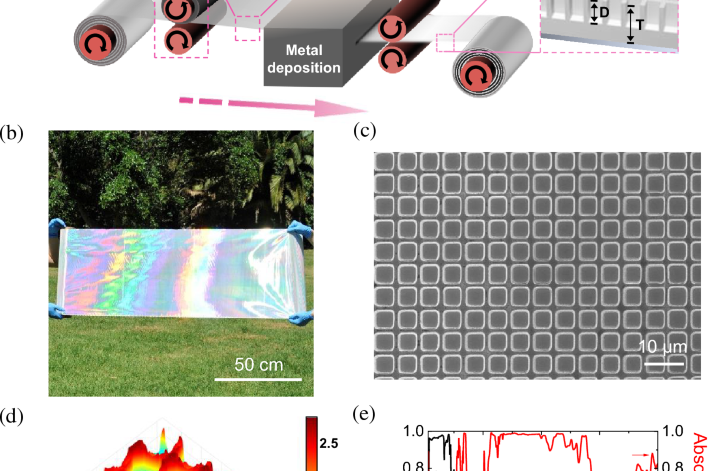
Highly efficient flexible structured metasurface by roll-to-roll printing for diurnal radiative cooling
Persistent cognitive slowing in post-covid patients: longitudinal study over 6 months.

Blame it on my youth: the origins of attitudes towards immigration

Creating the ICU of the future: patient-centred design to optimise recovery
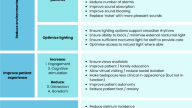
Featured journals
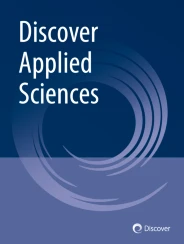
SN Applied Sciences is now Discover Applied Sciences! We are excited to announce that SN Applied Sciences moved into our fully OA Discover journal...
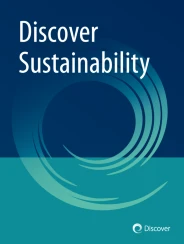
Discover Sustainability is an open access journal publishing research across all fields relevant to sustainability. Average number of article...

The Journal of Epidemiology and Global Healthis an international peer reviewed journal which aims to impact global epidemiology and international...

Featured books
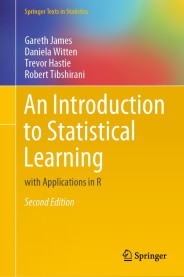
As part of Springer Nature, SpringerLink delivers fast access to the depth and breadth of our online collection of journals, eBooks, reference works and protocols across a vast range of subject disciplines.
SpringerLink is the reading platform of choice for hundreds of thousands of researchers worldwide. Find out how to publish your research with Springer Nature .
- Find a journal
Articles & Databases
Search for articles, books, proceedings, and more.

Library Catalog
Web of science, visit the library.
8:00 a.m. – 4:00 p.m.
Badgeholder access 24/7
TA-3, SM-207
(across from Otowi)
Quick Links
Resource guides.
info This is a space for the teal alert bar.
notifications This is a space for the yellow alert bar.

Understanding Research
- Information Sources
- Choose a Topic
- Identify Keywords
- Search the Databases
- Evaluate Sources
- Cite Sources This link opens in a new window
- Write and Review This link opens in a new window
- Test Your Knowledge
Research Consultations are live , one-on-one sessions that provide in-depth, high-level, and customized research assistance with a reference librarian.
Research Best Bets
Browse all of NU Library's databases on the A to Z database list.
Content: Scholarly journals, academic content, periodicals and videos covering a broad range of academic disciplines.
Purpose: A good starting point for research with coverage across many disciplines and fields.
Special Features: Text-to-speech listening feature. Tool to help discover citing articles.
Help using this database.
Content: The most comprehensive video database covering more than 67,000 titles on anthropology, business, counseling, film health, history, music, and more.
Purpose: Curated for the educational experience of all types of library patrons.
Content: Collection of more than 30 Proquest subject-specific databases covering Business, Health and Medical, Social Sciences, Education, Science and Technology, and Humanities.
Purpose: Students can view a massive amount of peer-reviewed research across multiple disciplines.
Special Features: Includes a Thesaurus feature that assists in using the database’s controlled vocabulary, as well as read-aloud feature.
Content: Scholarly, peer-reviewed journal articles only, in health science, biomedical science, engineering, social science, and the humanities.
Purpose: Use for scholarly research in most fields.
Special Features: Includes discipline hubs for browsing and citation search.

Search the Library

Search for articles, books, dissertations, and more
Using NavigatorSearch
Search with connectors.
To maximize your time and effectiveness in the research process, take advantage of some of the following search techniques that can be applied to many databases, including article databases, the library catalog, and commercial search engines.
Boolean Operators
Boolean searching involves connecting terms and concepts using the words AND, OR, and NOT in order to narrow or expand your search.
- Use AND to connect different main concepts in your research question/topic and refine your search results (internet AND bullying).
- Use OR to connect like terms or synonyms to expand your search results ("artificial intelligence" OR AI).
- Use NOT to remove unwanted terms from your search results (biology NOT marine).

Search Like an Expert
Search modifiers.
Quotation marks can be used to tell the databases to search for exact phrases, names, and multi-word terms.
- "artificial intelligence"
- "Sigmund Freud"
- "human immunodeficiency virus
Truncation is a technique used to broaden your search. Truncation searches multiple forms of a root word to include various word endings and spellings.
- To use truncation, enter the base word and put the truncation symbol at the end (usually an *asterisk).
- The results will include any ending of that root word.
- Truncation symbols vary by database and website but are most commonly: *, !, ?
- Example: child* = child, child's, children, childhood
Parentheses determine the order in which the database will search terms and Boolean Operators.
- Searching for supply AND (chain OR network) will return results that include the word supply, plus either the word chain or the word network, or both.
- Searching for car AND ("artificial intelligence" OR AI) will return results that include the word car, plus either the phrase artificial intelligence or the word AI, or both.

- << Previous: Identify Keywords
- Next: Evaluate Sources >>
- Last Updated: Apr 16, 2024 8:52 AM
- URL: https://resources.nu.edu/research
- Report a Problem

© Copyright 2024 National University. All Rights Reserved.
Privacy Policy | Consumer Information
Libraries | Research Guides
Comm_st 394: sexuality in the digital age (suenzo).
- Explore Your Topic
- Refine Your Topic
- Finding Books
Finding Articles in Databases
Scholarly vs. popular publications, evaluating articles.
- Cite Your Sources
- Research Support
Articles usually have a specific focus, are relatively short, and are relatively current. You can use databases to find journal articles. To see what the library has, you can go to the Databases A-Z list or browse research guides for suggestions on where to start in different subject areas.
- Communication Source This link opens in a new window Combining the content of Communication & Mass Media Complete and Communication Abstracts, this comprehensive resource offers content pertaining to communication, linguistics, rhetoric and discourse, speech-language pathology, media studies and related fields. Coverage goes back to 1915.
- Sociological Abstracts This link opens in a new window Sociological Abstracts provides citations and abstracts to international literature in sociology and related disciplines in the social and behavioral sciences. Content coverage includes culture and social structure, history and theory of sociology, race and ethnicity, social change and economic development, and more. 1952-Present. Individual publication coverage varies by title.
- Gender Studies Database This link opens in a new window Gender Studies Database combines the Women's Studies International and Men's Studies databases with the coverage of sexual diversity issues. GSD covers the full spectrum of gender-engaged scholarship.
- PsycINFO This link opens in a new window Produced by the American Psychological Association, this database is a comprehensive index to the professional and academic literature in psychology, counseling and related disciplines. Covers 1860-present.

- Evaluating Articles Magazines, journals, scholarly, popular, peer-reviewed...?? If you've ever run across any or a combination of these terms and needed clarification on their distinct meanings, this page aims to provide it.

- << Previous: Finding Books
- Next: Cite Your Sources >>
- Last Updated: Apr 16, 2024 3:47 PM
- URL: https://libguides.northwestern.edu/sexualityinthedigitalage
- Search Menu
Chemical Biology and Nucleic Acid Chemistry
Computational biology.
- Critical Reviews and Perspectives
Data Resources and Analyses
Gene regulation, chromatin and epigenetics, genome integrity, repair and replication.
- Methods Online
Molecular Biology
Nucleic acid enzymes, rna and rna-protein complexes, structural biology, synthetic biology and bioengineering.
- Advance Articles
- Breakthrough Articles
- Special Collections
- Scope and Criteria for Consideration
- Author Guidelines
- Data Deposition Policy
- Database Issue Guidelines
- Web Server Issue Guidelines
- Submission Site
- About Nucleic Acids Research
- Editors & Editorial Board
- Information of Referees
- Self-Archiving Policy
- Dispatch Dates
- Advertising and Corporate Services
- Journals Career Network
- Journals on Oxford Academic
- Books on Oxford Academic
Browse issues
Cover image.

Volume 52, Issue 6, 12 April 2024
Nar breakthrough article, crispr antiphage defence mediated by the cyclic nucleotide-binding membrane protein csx23.

- Lay summary
- View article
- Supplementary data
Programmable RNA 5-methylcytosine (m 5 C) modification of cellular RNAs by dCasRx conjugated methyltransferase and demethylase

Chemical modification patterns for microRNA therapeutic mimics: a structure-activity relationship (SAR) case-study on miR-200c

Bioorthogonal labeling and profiling of N 6 -isopentenyladenosine (i 6 A) modified RNA

Functional identification of cis -regulatory long noncoding RNAs at controlled false discovery rates

Structural insights into the morpholino nucleic acid/RNA duplex using the new XNA builder Ducque in a molecular modeling pipeline

Comprehensive map of ribosomal 2′-O-methylation and C/D box snoRNAs in Drosophila melanogaster

Comprehensive transcriptome analysis reveals altered mRNA splicing and post-transcriptional changes in the aged mouse brain

Acetylation of xenogeneic silencer H-NS regulates biofilm development through the nitrogen homeostasis regulator in Shewanella

Genetic variation is a key determinant of chromatin accessibility and drives differences in the regulatory landscape of C57BL/6J and 129S1/SvImJ mice

Nitric oxide sensor NsrR is the key direct regulator of magnetosome formation and nitrogen metabolism in Magnetospirillum

Lethal perturbation of an Escherichia coli regulatory network is triggered by a restriction-modification system's regulator and can be mitigated by excision of the cryptic prophage Rac

Identification of promoter activity in gene-less cassettes from Vibrionaceae superintegrons

NELF focuses sites of initiation and maintains promoter architecture

Chromatin remodeler CHD8 is required for spermatogonial proliferation and early meiotic progression

The dimeric deubiquitinase USP28 integrates 53BP1 and MYC functions to limit DNA damage

H2A.Z is involved in premature aging and DSB repair initiation in muscle fibers

Nucleolar detention of NONO shields DNA double-strand breaks from aberrant transcripts

DNA hypomethylation activates Cdk4/6 and Atr to induce DNA replication and cell cycle arrest to constrain liver outgrowth in zebrafish

Linear DNA-driven recombination in mammalian mitochondria

The chromatin accessibility dynamics during cell fate specifications in zebrafish early embryogenesis

Evolution of microRNAs in Amoebozoa and implications for the origin of multicellularity

Cross-contamination of CRISPR guides and other unrelated nucleotide sequences among commercial oligonucleotides

Resection of DNA double-strand breaks activates Mre11–Rad50–Nbs1- and Rad9–Hus1–Rad1-dependent mechanisms that redundantly promote ATR checkpoint activation and end processing in Xenopus egg extracts

A sensitive and scalable fluorescence anisotropy single stranded RNA targeting approach for monitoring riboswitch conformational states

Novel mechanisms of diversity generation in Acinetobacter baumannii resistance islands driven by Tn7-like elements

Cryptic proteins translated from deletion-containing viral genomes dramatically expand the influenza virus proteome

Multifaceted roles of t 6 A biogenesis in efficiency and fidelity of mitochondrial gene expression

Innate programmable DNA binding by CRISPR-Cas12m effectors enable efficient base editing

Single-molecule characterization of Sen1 translocation properties provides insights into eukaryotic factor-dependent transcription termination

Identification of Hammerhead-variant ribozyme sequences in SARS-CoV-2

A jingmenvirus RNA-dependent RNA polymerase structurally resembles the flavivirus counterpart but with different features at the initiation phase

THUMPD2 catalyzes the N 2 -methylation of U6 snRNA of the spliceosome catalytic center and regulates pre-mRNA splicing and retinal degeneration

Dissolution of ribonucleoprotein condensates by the embryonic stem cell protein L1TD1

LINE-1 mRNA 3′ end dynamics shape its biology and retrotransposition potential

NAC and Zuotin/Hsp70 chaperone systems coexist at the ribosome tunnel exit in vivo
Influence of RNA circularity on Target RNA-Directed MicroRNA Degradation

Site-specific incorporation of a fluorescent nucleobase analog enhances i-motif stability and allows monitoring of i-motif folding inside cells

Structure of native four-repeat satellite III sequence with non-canonical base interactions

Structural insights into the N-terminal APHB domain of HrpA: mediating canonical and i-motif recognition

Conserved structures and dynamics in 5′-proximal regions of Betacoronavirus RNA genomes

Molecular mechanism of the one-component regulator RccR on bacterial metabolism and virulence

An engineered baculoviral protein and DNA co-delivery system for CRISPR-based mammalian genome editing

Peptide nucleic acid-assisted generation of targeted double-stranded DNA breaks with T7 endonuclease I

Correction to ‘Twenty-five years of Genomes OnLine Database (GOLD): data updates and new features in v.9’
Correction to ‘genomes online database (gold) v.8: overview and updates’, correction to ‘functional identification of cis-regulatory long noncoding rnas at controlled false discovery rates’, correction to ‘pathbank 2.0—the pathway database for model organism metabolomics’, correction to ‘cell cycle regulated dna methyltransferase: fluorescent tracking of a dna strand-separation mechanism and identification of the responsible protein motif’, correction to ‘a dual-activity topoisomerase complex promotes both transcriptional activation and repression in response to starvation’, global identification of mrna-interacting circular rnas by clippr-seq.

CRISPR-COPIES: an in silico platform for discovery of neutral integration sites for CRISPR/Cas-facilitated gene integration

Prediction of protein-RNA interactions from single-cell transcriptomic data

BISCUIT: an efficient, standards-compliant tool suite for simultaneous genetic and epigenetic inference in bulk and single-cell studies

Employing bimodal representations to predict DNA bendability within a self-supervised pre-trained framework

A system of reporters for comparative investigation of EJC-independent and EJC-enhanced nonsense-mediated mRNA decay

Email alerts
- Editorial Board
Affiliations
- Online ISSN 1362-4962
- Print ISSN 0305-1048
- Copyright © 2024 Oxford University Press
- About Oxford Academic
- Publish journals with us
- University press partners
- What we publish
- New features
- Open access
- Institutional account management
- Rights and permissions
- Get help with access
- Accessibility
- Advertising
- Media enquiries
- Oxford University Press
- Oxford Languages
- University of Oxford
Oxford University Press is a department of the University of Oxford. It furthers the University's objective of excellence in research, scholarship, and education by publishing worldwide
- Copyright © 2024 Oxford University Press
- Cookie settings
- Cookie policy
- Privacy policy
- Legal notice
This Feature Is Available To Subscribers Only
Sign In or Create an Account
This PDF is available to Subscribers Only
For full access to this pdf, sign in to an existing account, or purchase an annual subscription.
Maintenance work is planned for Wednesday 1st May 2024 from 9:00am to 11:00am (BST).
During this time, the performance of our website may be affected - searches may run slowly and some pages may be temporarily unavailable. If this happens, please try refreshing your web browser or try waiting two to three minutes before trying again.
We apologise for any inconvenience this might cause and thank you for your patience.
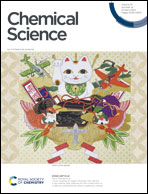
Chemical Science
New perspective crosslinking electrochemistry and other research fields: beyond electrochemical reactors †.

* Corresponding authors
a School of Chemistry and Materials Science, University of Science and Technology of China, Hefei 230026, China E-mail: [email protected]
Over the years, electrochemical reactors have evolved significantly, with modern reactors now able to achieve a high current density and power output in compact sizes. This leap in performance has not only greatly accelerated the rate of electrochemical reactions but also had a broader impact on the environment. Traditional research perspectives, focused primarily on the internal working systems of reactors, possibly overlook the potential of electrochemical systems in regulating their surrounding environment. A novel research perspective considering the interaction between electrochemical processes and their environmental context as a unified subject of study has gradually emerged alongside the dramatic development of electrochemical techniques. This viewpoint introduces a paradigm shift: electrochemical reactors are not isolated entities but rather are integral parts that interact with their surroundings. Correspondingly, this calls for an innovative research methodology that goes beyond studying the electrochemical processes in isolation. Rather, it integrates the design of the electrochemical system with its specific application environment, ensuring seamless integration for optimal performance under various practical conditions. Therefore, performance metrics should include not only the basic parameters of the electrochemical reactions but also the adaptability of the electrochemical system in real-world scenarios beyond the laboratory. By focusing on environmental integration and application-driven design, the applications of electrochemical technology can be more effectively leveraged. This perspective is exemplified by an electrochemical system based on coupled cathodic oxygen reduction and anodic oxygen evolution reactions. By adopting this new research paradigm, the applications of this electrochemical system can be extended to fields like medical treatment, food science, and microbial fermentation, with an emphasis on tailored designs for these specific application fields. This comprehensive and systematic new research approach aims to fully explore the potential applications of electrochemical technology and foster interdisciplinary collaboration in the electrochemical field.
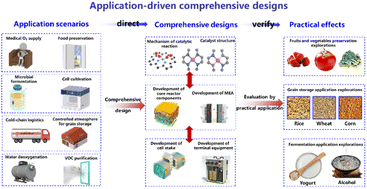
Supplementary files
- Supplementary information PDF (119K)
Transparent peer review
To support increased transparency, we offer authors the option to publish the peer review history alongside their article.
View this article’s peer review history
Article information
Download Citation
Permissions.
New perspective crosslinking electrochemistry and other research fields: beyond electrochemical reactors
Y. Zhang and Y. Wu, Chem. Sci. , 2024, Advance Article , DOI: 10.1039/D3SC06983D
This article is licensed under a Creative Commons Attribution-NonCommercial 3.0 Unported Licence . You can use material from this article in other publications, without requesting further permission from the RSC, provided that the correct acknowledgement is given and it is not used for commercial purposes.
To request permission to reproduce material from this article in a commercial publication , please go to the Copyright Clearance Center request page .
If you are an author contributing to an RSC publication, you do not need to request permission provided correct acknowledgement is given.
If you are the author of this article, you do not need to request permission to reproduce figures and diagrams provided correct acknowledgement is given. If you want to reproduce the whole article in a third-party commercial publication (excluding your thesis/dissertation for which permission is not required) please go to the Copyright Clearance Center request page .
Read more about how to correctly acknowledge RSC content .
Social activity
Search articles by author.
This article has not yet been cited.
Advertisements

CLAS1020: Argument from Evidence (Dzugan): Finding Articles
- Finding Books
- Finding Articles
- Writing & Citing
- Getting Help
Exploring Resources for Classical Research
Finding scholarly articles.
Databases contain articles that will be helpful for your research paper. Explore the database and journals below to get started on your research.
Databases to Start With
Digital library of academic journals, books, and primary sources.
More Helpful Databases
- Google Scholar Tool to search for scholarly documents across the web, with an added feature of CU Full Text links.
- Oxford Classical Dictionary Reference work consisting of articles relating to classical antiquity and its civilizations.
- Encyclopedia of Ancient History Covers the ancient Mediterranean world, including the Near East and Egypt, from the late Bronze Age through the 7th century CE.
- Humanities Full Text (EBSCO) Full-text articles and indexing of academic journals covering a broad range of subjects in the humanities and social sciences. Includes the following collections: Humanities & Social Sciences Index Retrospective: 1907-1984 (H.W. Wilson), Humanities Full Text (H.W. Wilson)
Helpful Journals
- Greece and Rome This journal publishes articles on ancient history, ancient art, archaeology, Classical literature, the Classical tradition, religion, and philosophy intended for undergraduate students and scholars. All Ancient Greek and Latin texts used by authors are translated into English.
- The Classical Journal This journal publishes articles on Classical topics with a literary, historical, or cultural focus. All Ancient Greek and Latin texts used by authors are translated into English.
- Helios Focuses on publishing articles that analyze Classical topics through a modern lens using critical theory, such as queer, feminist psychoanalytic, anthropological, critical race, and other new and emerging theories. All Ancient Greek and Latin texts used by authors are translated into English.
- The Classical Quarterly This journal focuses on publishing articles about Classical languages, literature, history, and philosophy. All Ancient Greek and Latin texts used by authors are translated into English.
Ask A Librarian
Make an appointment
Chat with a Librarian
Email [email protected]
- << Previous: Finding Books
- Next: Writing & Citing >>
- University of Colorado Boulder Libraries
- Research Guides
- CLAS1020: Argument from Evidence (Dzugan)
- Last Updated: Apr 16, 2024 8:21 AM
- URL: https://libguides.colorado.edu/CLAS1020

- Nuclear Physics
- NP Highlights
- Nuclear Science Advisory Committee
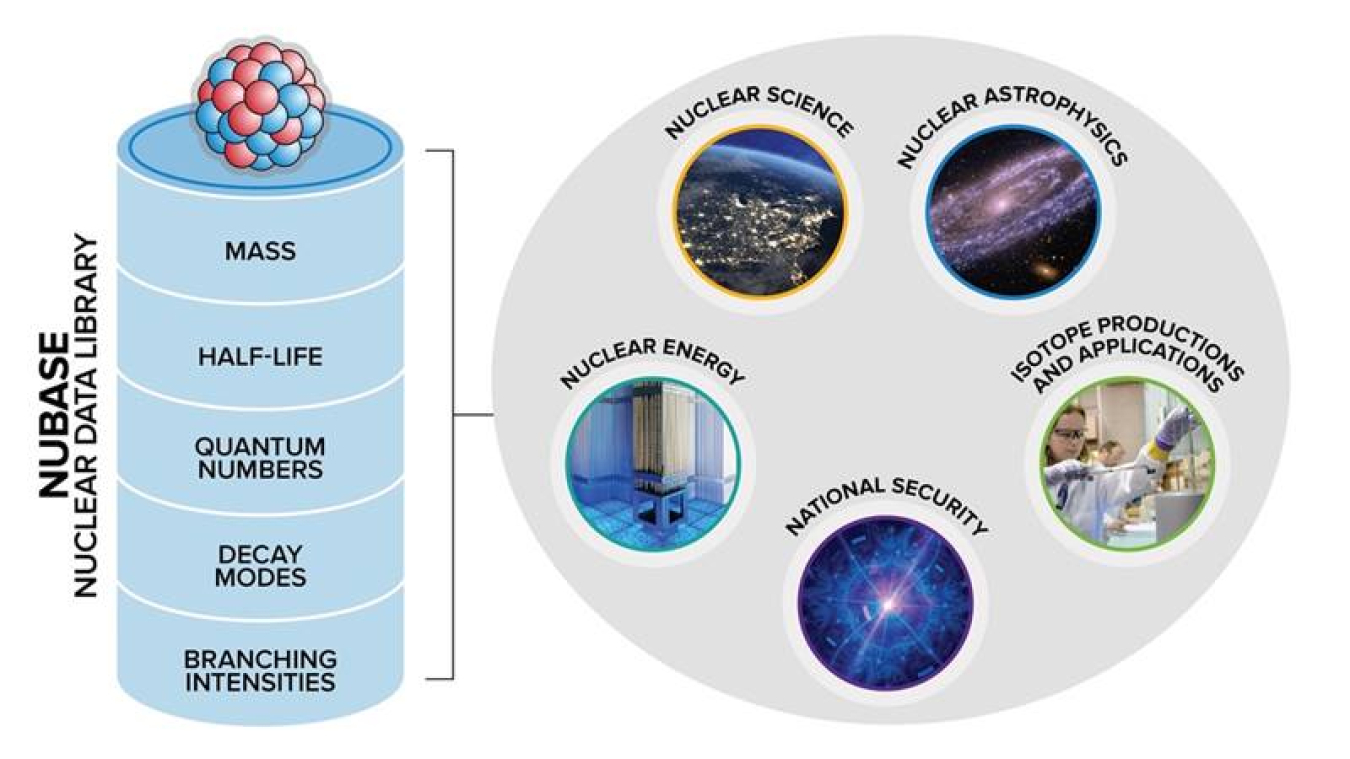
The Science
Atomic nuclei exist in the form of isotopes that differ in how many neutrons and protons they have. Today, scientists know of more than 3,300 isotopes. While most isotopes are produced artificially in scientific laboratories, many are created in stars and stellar explosions . A research team has now compiled experimental data for all known nuclei. This includes the isotopes’ main nuclear physics properties, such as mass, quantum numbers, half-life, decay modes, and branching intensities. The researchers evaluated all the data and reported recommended values and their uncertainties. The results are available in the NUBASE library, which also includes estimates for isotopes that are predicted by theoretical models but that scientists have not yet observed.
The data in the NUBASE library cover each nucleus in its ground state (its lowest energy level) and its isomeric states (higher energy levels that live longer than what is typical for other excited levels). Well-defined and credible nuclear data for these states are key to scientists’ understanding of the Universe. The recommended nuclear data are also important in many applications. They are relevant to nearly every field of nuclear research, from basic science and astrophysics to energy, national security, and medicine.
Reliable information on the basic properties of nuclei is a fundamental building block for research in modern nuclear structure and astrophysics. Researchers need good-quality nuclear data formulated and recommended through a speedy assessment and incorporation of new and improved measurements. A sound understanding and accurate quantification of basic nuclear properties help drive advances in many areas.
The current NUBASE nuclear data library contains recommended values and uncertainties for nuclear physics characteristics of all nuclei in their ground and isomeric states. It incorporates a variety of experimental data produced at world-wide nuclear physics facilities. The entries are drawn from primary sources such as journal articles and from secondary sources such as laboratory reports and conference proceedings. Each data point includes pertinent bibliographic details. The entry data are critically evaluated, discrepant results are dismissed, and statistical analysis is applied when recommending the final values. Where experimental data are lacking, estimates are given based on trends in the behavior of the properties for neighboring nuclei. The recommended data are useful for applications in fundamental science, astrophysics, power production, space exploration, national security, human health, and environmental protection.
Filip G. Kondev Argonne National Laboratory [email protected]
This research was supported by the Department of Energy Office of Science, Office of Nuclear Physics.
Publications
Kondev, F.G., et al. , The NUBASE2020 evaluation of nuclear physics properties . Chinese Physics C 45 , 030001 (2021). [DOI: 10.1088/1674-1137/abddae]
Related Links
Argonne physicist recognized for “Top Cited Paper” by Institute of Physics , Argonne National Laboratory news.

IMAGES
VIDEO
COMMENTS
Google Scholar provides a simple way to broadly search for scholarly literature. Search across a wide variety of disciplines and sources: articles, theses, books, abstracts and court opinions.
Harness the power of visual materials—explore more than 3 million images now on JSTOR. Enhance your scholarly research with underground newspapers, magazines, and journals. Explore collections in the arts, sciences, and literature from the world's leading museums, archives, and scholars. JSTOR is a digital library of academic journals ...
What is Database Search? Harvard Library licenses hundreds of online databases, giving you access to academic and news articles, books, journals, primary sources, streaming media, and much more. The contents of these databases are only partially included in HOLLIS. To make sure you're really seeing everything, you need to search in multiple places.
Moved Permanently. The document has moved here.
3.3 million articles on ScienceDirect are open access. Articles published open access are peer-reviewed and made freely available for everyone to read, download and reuse in line with the user license displayed on the article. ScienceDirect is the world's leading source for scientific, technical, and medical research.
Organize your papers in one place. Try Paperpile. 1. Scopus. Scopus is one of the two big commercial, bibliographic databases that cover scholarly literature from almost any discipline. Besides searching for research articles, Scopus also provides academic journal rankings, author profiles, and an h-index calculator. 2.
Discover a digital archive of scholarly articles, spanning centuries of scientific research. User Guide Learn how to find and read articles of interest to you. ... Learn about deposit options for journals and publishers and the PMC selection process. For Developers Find tools for bulk download, text mining, and other machine analysis. ...
Search all biomedical databases provided by the National Center for Biotechnology Information (NCBI), an agency of the U.S. National Library of Medicine at the NIH ... While these interactions have been well studied, a research team supported in part by NIH has made an unexpected discovery into how a key immune checkpoint works, with ...
Atom. RSS Feed. A database is one or more sets of data, for example numbers, characters and images, bundled together with software that enables data to be added, removed or retrieved. Databases ...
PubMed is a free resource supporting the search and retrieval of biomedical and life sciences literature with the aim of improving health-both globally and personally. The PubMed database contains more than 36 million citations and abstracts of biomedical literature. It does not include full text journal articles; however, links to the full ...
Explore the latest full-text research PDFs, articles, conference papers, preprints and more on DATABASE RESEARCH. Find methods information, sources, references or conduct a literature review on ...
Help finding articles. You can use UC Library Search on the Library homepage to search across various book and article databases simultaneously. To find the best resources for your topic, you might want to go directly to a specific database. Find the best database (s) for your research topic: General article databases are a good place to start ...
About the directory. DOAJ is a unique and extensive index of diverse open access journals from around the world, driven by a growing community, and is committed to ensuring quality content is freely available online for everyone. DOAJ is committed to keeping its services free of charge, including being indexed, and its data freely available.
The research in database systems education has evolved over the years with respect to modern contents influenced by technological advancements, supportive tools to engage the learners for better learning, and improvisations in teaching and assessment methods. Particularly, in recent years there is a shift from self-describing data-driven ...
Find the research you need | With 160+ million publications, 1+ million questions, and 25+ million researchers, this is where everyone can access science
One of the largest and most authoritative collections of online journals, books, and research resources, covering life, health, social, and physical sciences.
Articles & Databases. Explore our collection of hundreds of online resources and databases. Use our free online content to help with your research, whether it's finding a single article, tracing a family tree, learning a new language, or anything in between.
The Articles and Research Database collection from Montana State University (MSU) Library contains over 240 databases available to the faculty, staff, graduate students, and undergraduate students of Montana State University and Gallatin College. Start your research here to find journals, magazines, peer-reviewed articles, sound and film recordings, newspapers, business and industry ...
Browse books and journals on JSTOR by subject. Browse by Subject. Area Studies. African American Studies African Studies
Access 160+ million publications and connect with 25+ million researchers. Join for free and gain visibility by uploading your research.
As part of Springer Nature, SpringerLink delivers fast access to the depth and breadth of our online collection of journals, eBooks, reference works and protocols across a vast range of subject disciplines. SpringerLink is the reading platform of choice for hundreds of thousands of researchers worldwide. Find out how to publish your research ...
Los Alamos National Laboratory. P.O. Box 1663 . Los Alamos, NM 87545 (505) 667-5061
The move may help remediate existing databases' focus on English-language journals, advocates say. It could also help improve "circulation of scientific and local knowledge produced in different languages, ... Establishing and maintaining a research information database is no easy feat. Although computer algorithms can gather a lot of data ...
Content: Scholarly journals, academic content, periodicals and videos covering a broad range of academic disciplines. Purpose: A good starting point for research with coverage across many disciplines and fields. Special Features: Text-to-speech listening feature.Tool to help discover citing articles. Help using this database.
Find support. Find answers to questions about products, access, setup, and administration. Visit the support center. ProQuest powers research in academic, corporate, government, public and school libraries around the world with unique content. Explore millions of resources from scholarly journals, books, newspapers, videos and more.
Finding Articles in Databases. Articles usually have a specific focus, are relatively short, and are relatively current. You can use databases to find journal articles. To see what the library has, you can go to the Databases A-Z list or browse research guides for suggestions on where to start in different subject areas.
Publishes the results of leading edge research into physical, chemical, biochemical and biological aspects of nucleic acids and proteins involved in nucleic acid metabolism and/or interactions. Fully open access.
New perspective crosslinking electrochemistry and other research fields: beyond electrochemical reactors Y. Zhang and Y. Wu, Chem. Sci., 2024, Advance Article , DOI: 10.1039/D3SC06983D This article is licensed under a Creative Commons Attribution-NonCommercial 3.0 Unported Licence.
Exploring Resources for Classical Research. Classics : Finding Scholarly Articles. Databases contain articles that will be helpful for your research paper. Explore the database and journals below to get started on your research. Databases to Start With. JSTOR. Digital library of academic journals, books, and primary sources.
The Science. Atomic nuclei exist in the form of isotopes that differ in how many neutrons and protons they have. Today, scientists know of more than 3,300 isotopes. While most isotopes are produced artificially in scientific laboratories, many are created in stars and stellar explosions.A research team has now compiled experimental data for all known nuclei.